-
THCUO RPQVR ARBMU NQIKD YIXZO JG 🕵️
THCUO RPQVR IHIEZ EQBJS UELFW BGNCK CXBEW BGQEY SDH

In der alten Bibliothek fand man drei Manuskripte: I, II und III. Jeder Abschnitt war mit AAA markiert – ein merkwürdiger Zufall, denn auch die letzten Seiten trugen erneut das Kürzel AAA. Manche glauben, es handle sich um ein Werk, das Gedanken in Zeichen verwandelte – und Zeichen in Schweigen.
Amgine erscheint dort, wo der Weg zurück zum Ausgang führt. -
Editing Equirectangular Panoramas via Cube Face Conversion in PTGui
Editing equirectangular panoramic images can be challenging, especially near the zenit (top) and nadir (bottom) due to the heavy distortion in those areas. A practical solution is to convert the equirectangular image into cube faces, which represent the six sides of a cube (front, back, left, right, top, bottom). This format allows for easier and more precise editing. Once the modifications are complete, the cube faces can be reassembled into a seamless equirectangular panorama.
🖼️ Convert ➝ 🧊 Cube Faces ➝ 🖼️ Edit ➝ 🔄 Reassemble ➝ ✅ Done

This guide outlines the complete process using PTGui:
🧊 Step 1: Load the Equirectangular Image into PTGui and convert to Cube Faces
- Open PTGui.
- In the "Extras" menu, select the option to convert to cube faces.
- Add the equirectangular image, set the Jpeg-Quality to 95 if you are using Jpeg, and click "Convert"

🖼️ Step 2: Edit the Cube Faces
Open the six undistorted cube face images in your preferred image editor and apply the necessary edits to the relevant face(s), such as removing a tripod from the nadir or retouching the sky in the zenit.
Save the edited images with the same filenames.🔄 Step 3: Reassemble the Cube Faces into an Equirectangular Image
- Open PTGui.
- Load the six edited cube face images. You can simply drag and drop the cube face images from the explorer.

The images are automatically aligned for equirectangular output in the PTGui editor:
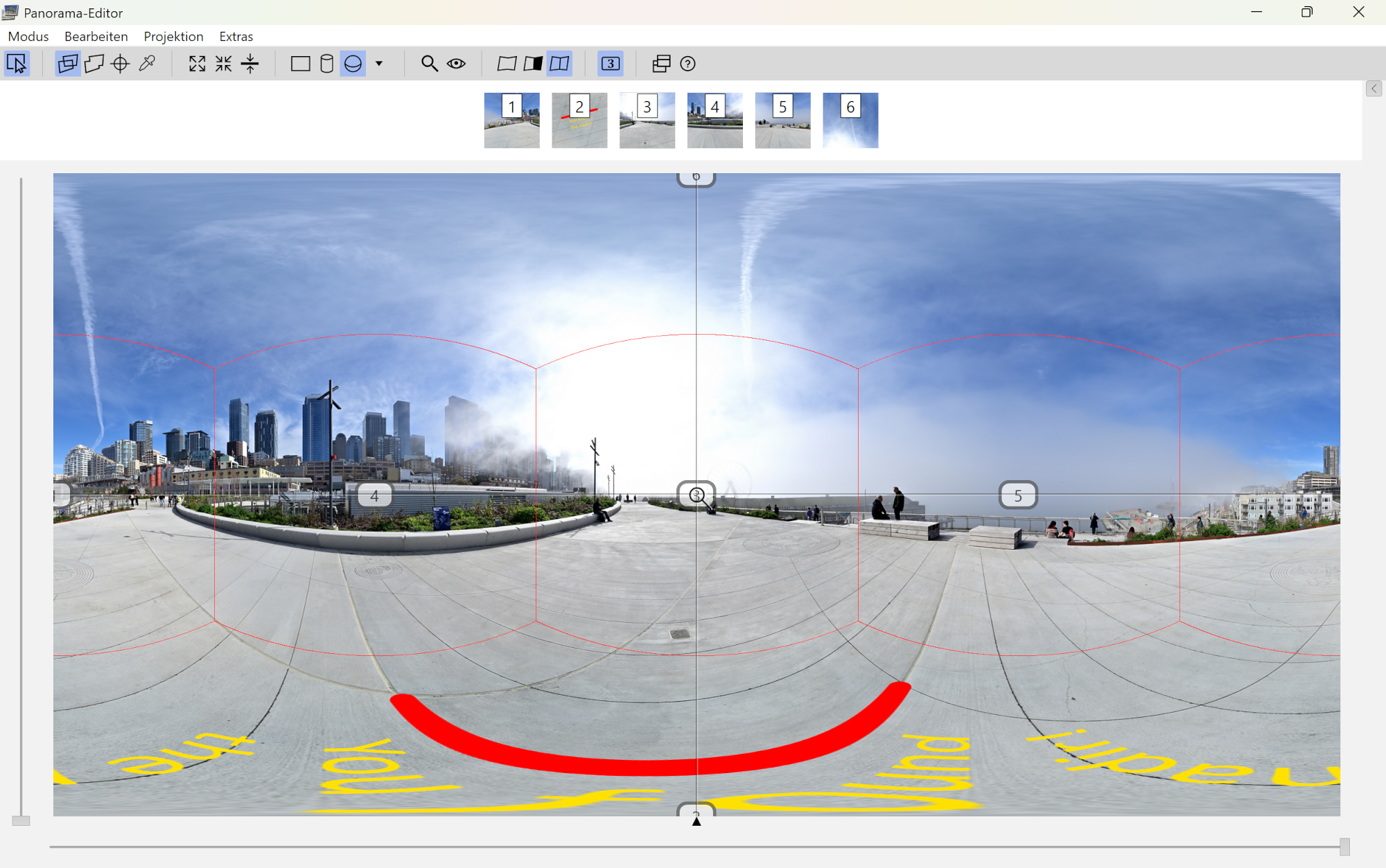
3. Go to the "Create Panorama" tab.
4. Choose your desired output resolution and click "Create Panorama".
Converting an equirectangular panorama into cube faces provides precise control over editing problematic areas like the nadir and zenit. PTGui simplifies this workflow, enabling seamless transitions between projections and accurate reassembly of the final panorama. This method is particularly effective for high-quality virtual tours, 360° photography, and professional post-processing tasks.
Thinking a step further, what you really need is the 15,3mm lens reported by PTGui:
 As someone who's always appreciated Sigma for their forward-thinking designs, innovation and engineering excellence, I was genuinely pleased to see them take the idea of the CUBE FACE LENS and created one. With its 15,3mm focal length, its perfectly suited for capturing seamless panoramas.
As someone who's always appreciated Sigma for their forward-thinking designs, innovation and engineering excellence, I was genuinely pleased to see them take the idea of the CUBE FACE LENS and created one. With its 15,3mm focal length, its perfectly suited for capturing seamless panoramas.
Expect cheap Chinese clones to hit the market soon.
ð Reportedly, this lens can focus from 0,2m to 1AU (astronomical unit), so you can have the sun perfectly in focus.
Because sometimes, the best way to solve a problem … is to avoid it entirely in the first place. The 15,3mm cube face lens captures the world in exactly 90° intervals. Just six clean shots stitched with pixel-perfect seamlines, and leave the fisheye theatrics at the door.
-
Spokane, WA
Spokane, Washington, nestled along the Spokane River in the eastern part of the state, is known for its rich history, vibrant arts scene, and stunning natural surroundings. Named after the Spokane Tribe, 'Children of the Sun' in the Salish language, the city reflects deep indigenous roots and natural beauty.
All pictures and panoramic images are taken with 1/1000s f/5,6 ISO 100/21° f=7,5mm, unless noted otherwise.
🏥 UW
Our journey begins at the University of Washington School of Medicine's Spokane campus, where the first panorama captures the academic heart of the city.
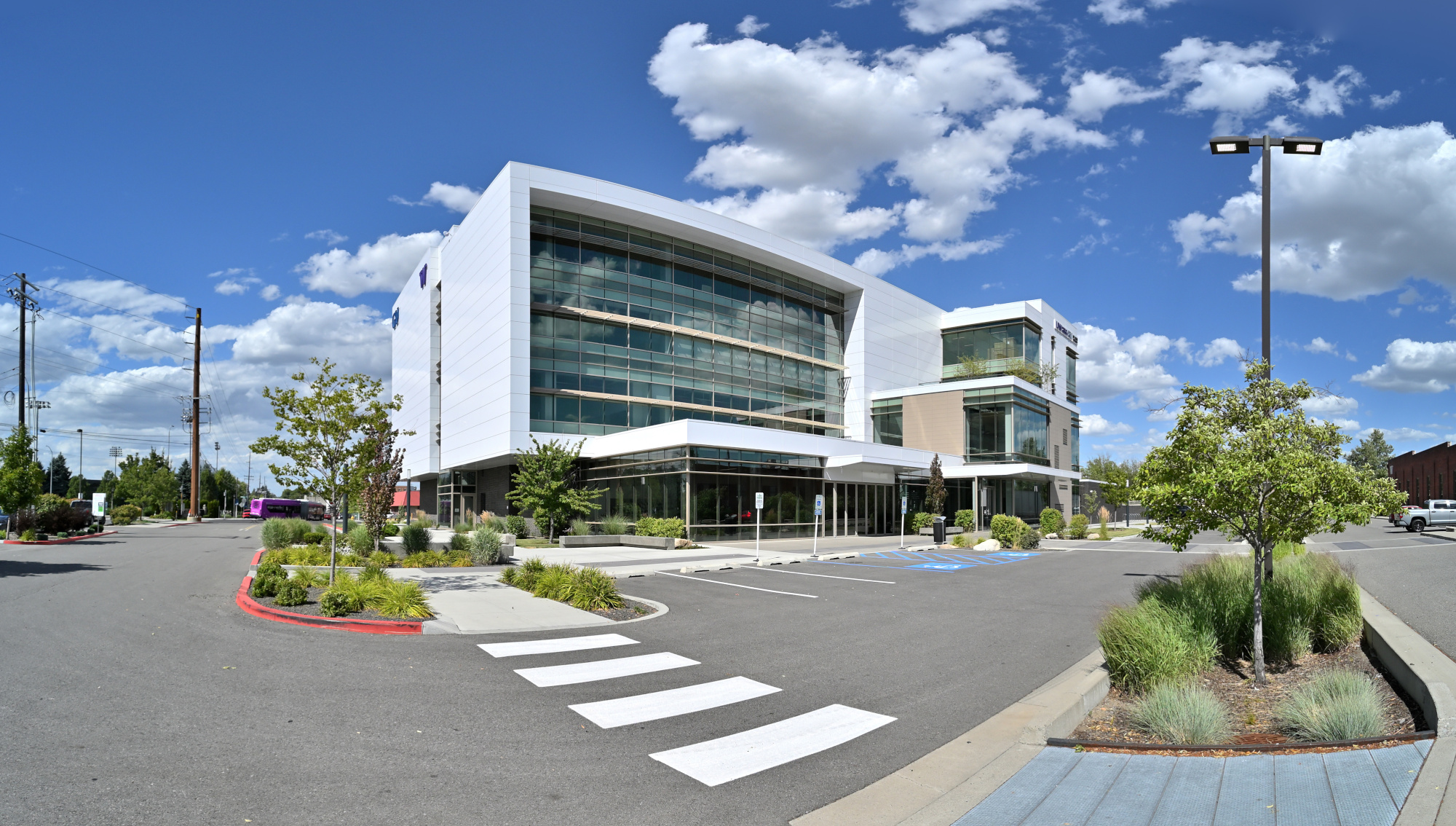


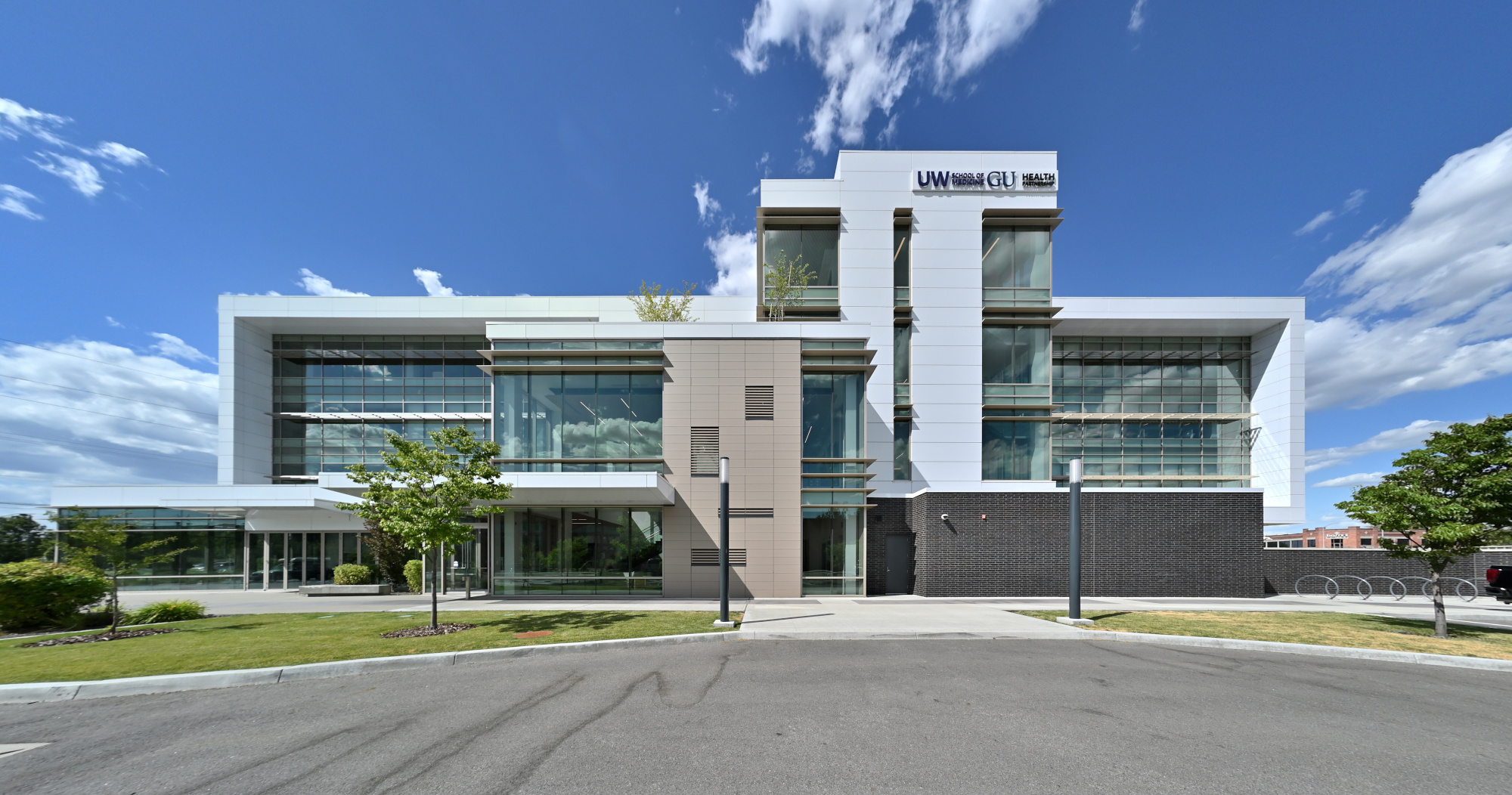

🌳 Riverfront Park
Spokane's green centerpiece, once the site of Expo '74, is now a vibrant public space full of history and movement. Bridges connect the city to Havermale Island, where some panoramas were taken. The view here spans from the upper Spokane Falls to the Pavilion, capturing the park's dynamic blend of nature, architecture, and community life.
The Centennial Sculpture on a cloudy day
And next to it, The Great Northern Clocktower
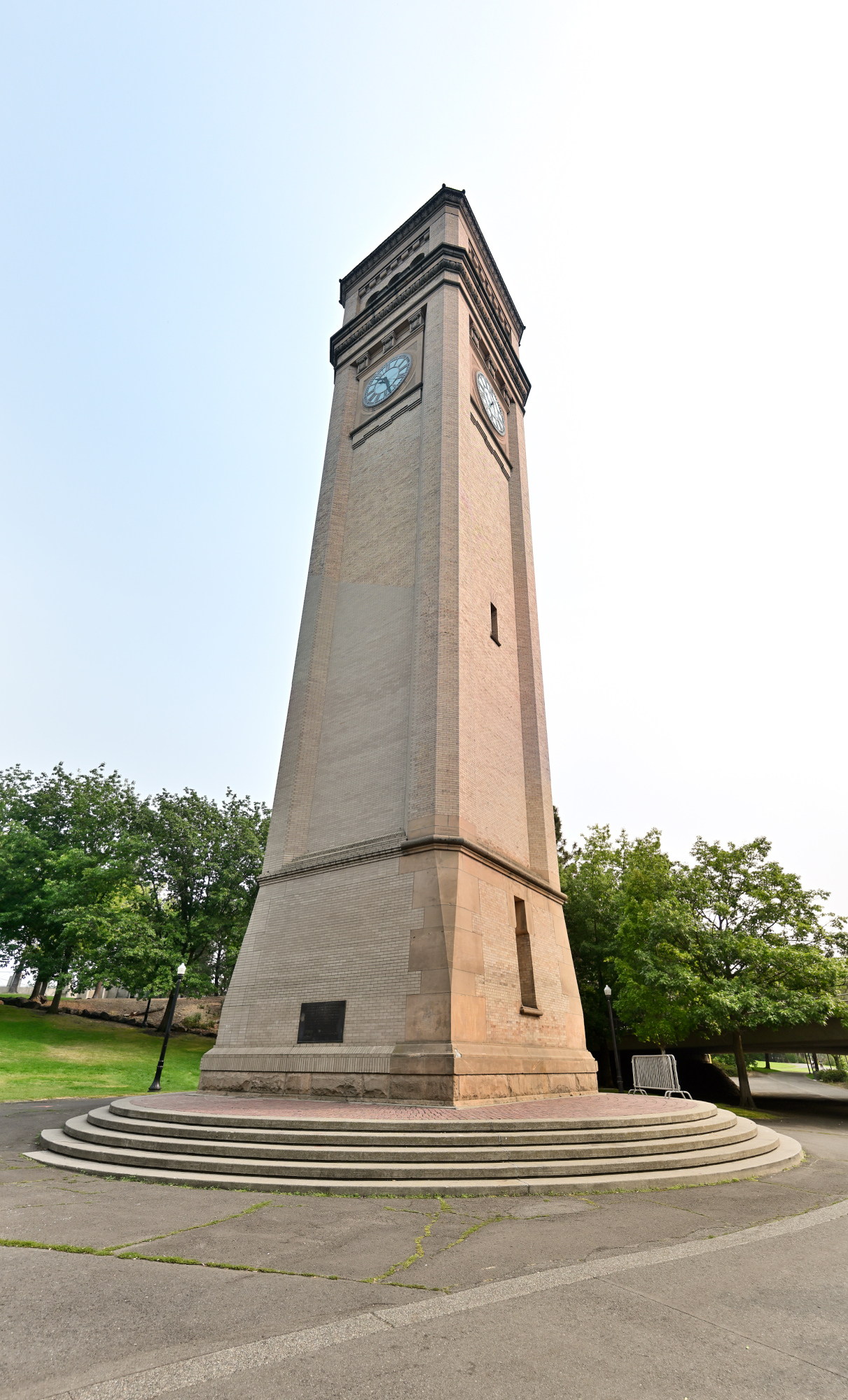
View from a nearby Hotel to the Riverfront Park

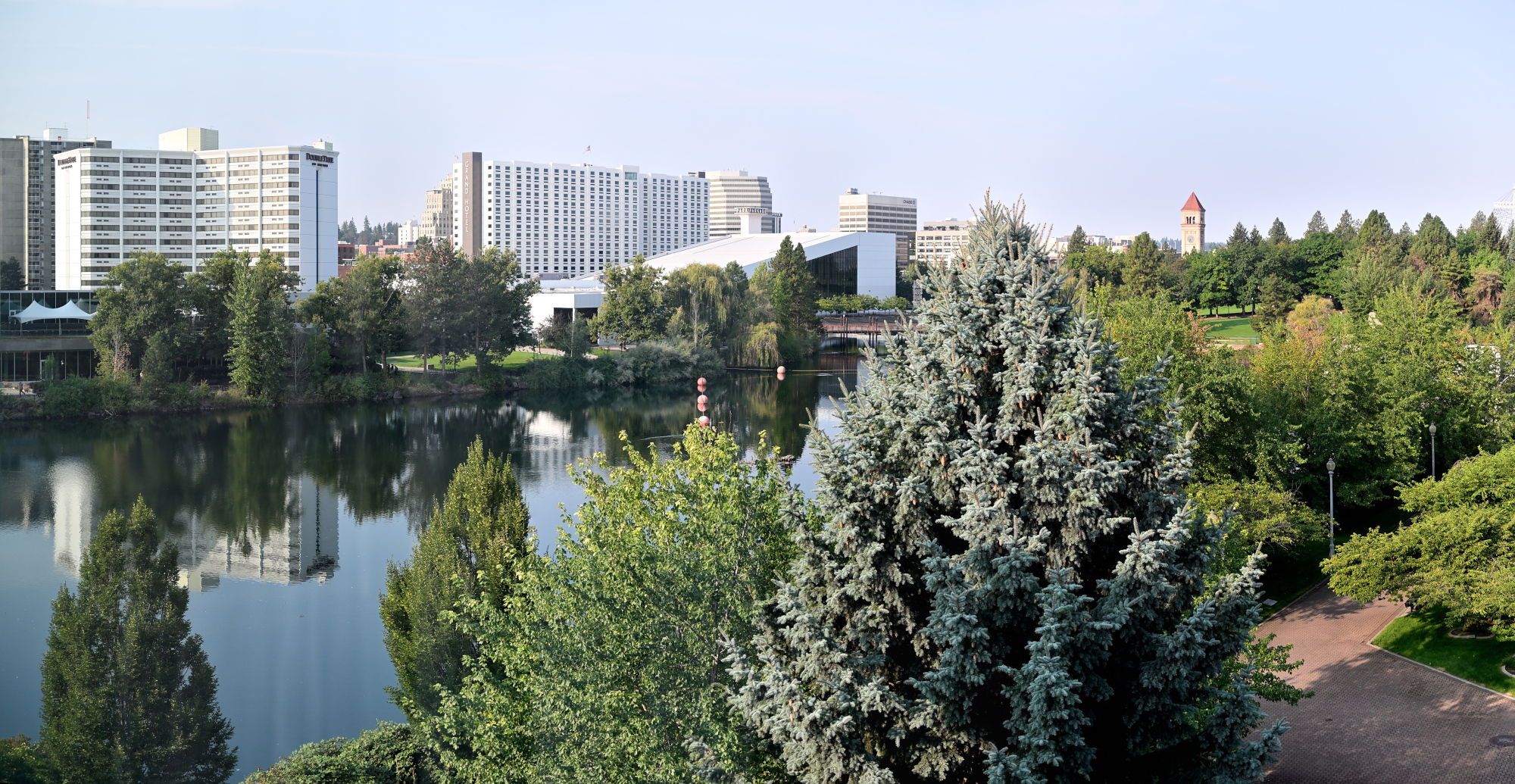
This particular panorama proved trickier than expected. Without a tripod, aligning the frames by hand made it difficult to maintain precise rotation around the nodal point, which is essential for perfect stitching. I even added an extra frame to help with stitching, but small imperfections remain. Still, the result captures the essence of the scene, even if a few pixels had a mind of their own. Sometimes, the story behind the image is part of the image itself.
Interactive Panorama Spokane Pavilion

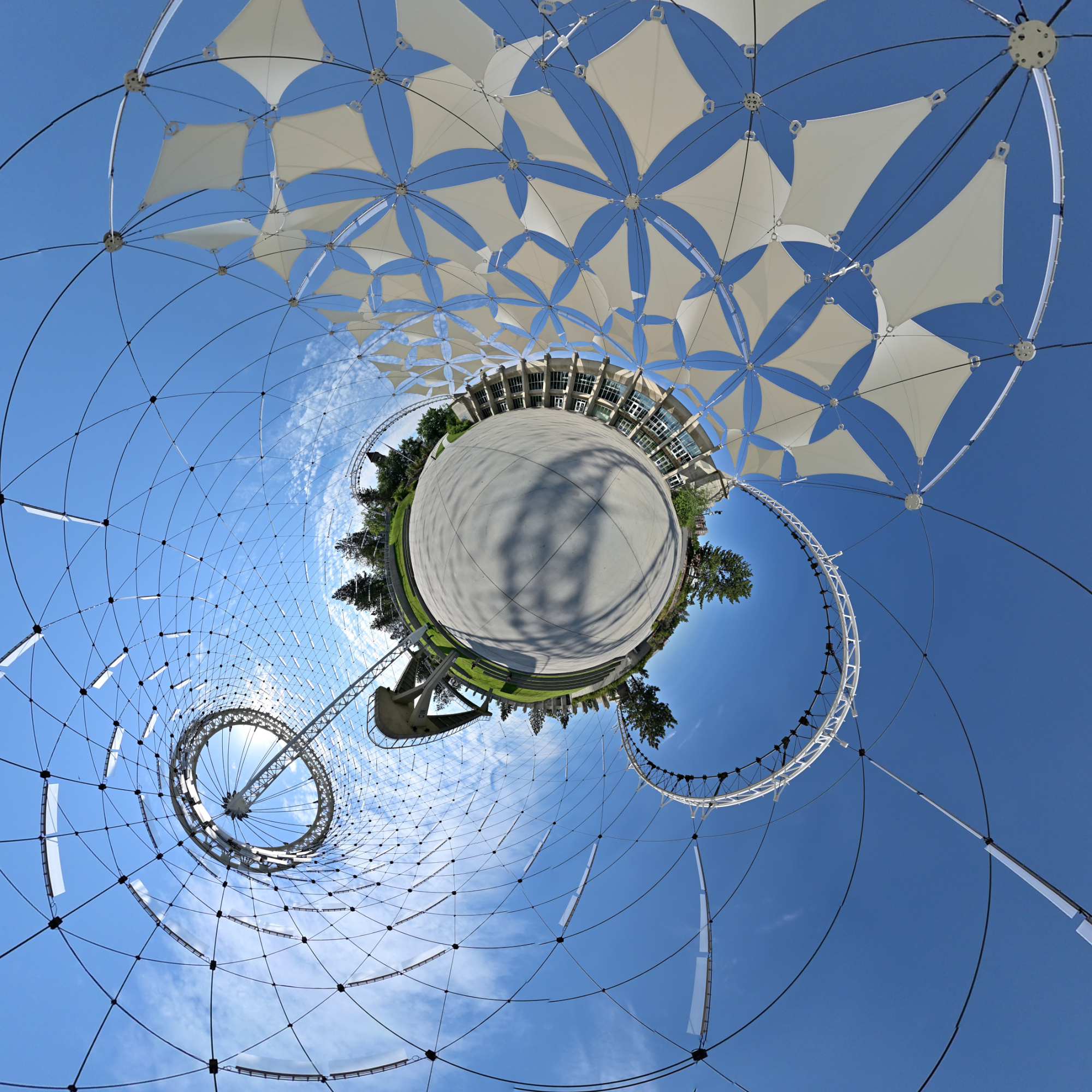
Interactive Panorama King Cole Woodbridge
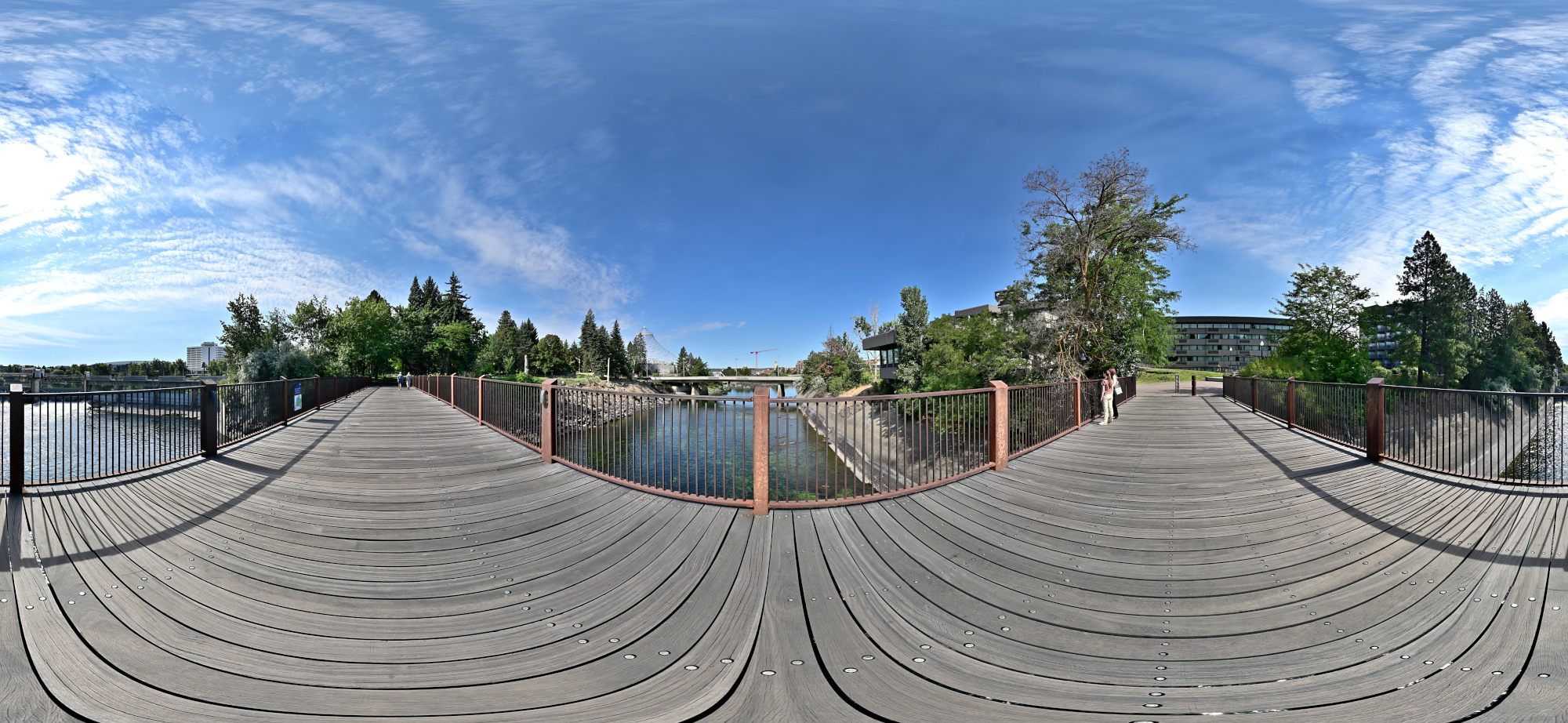
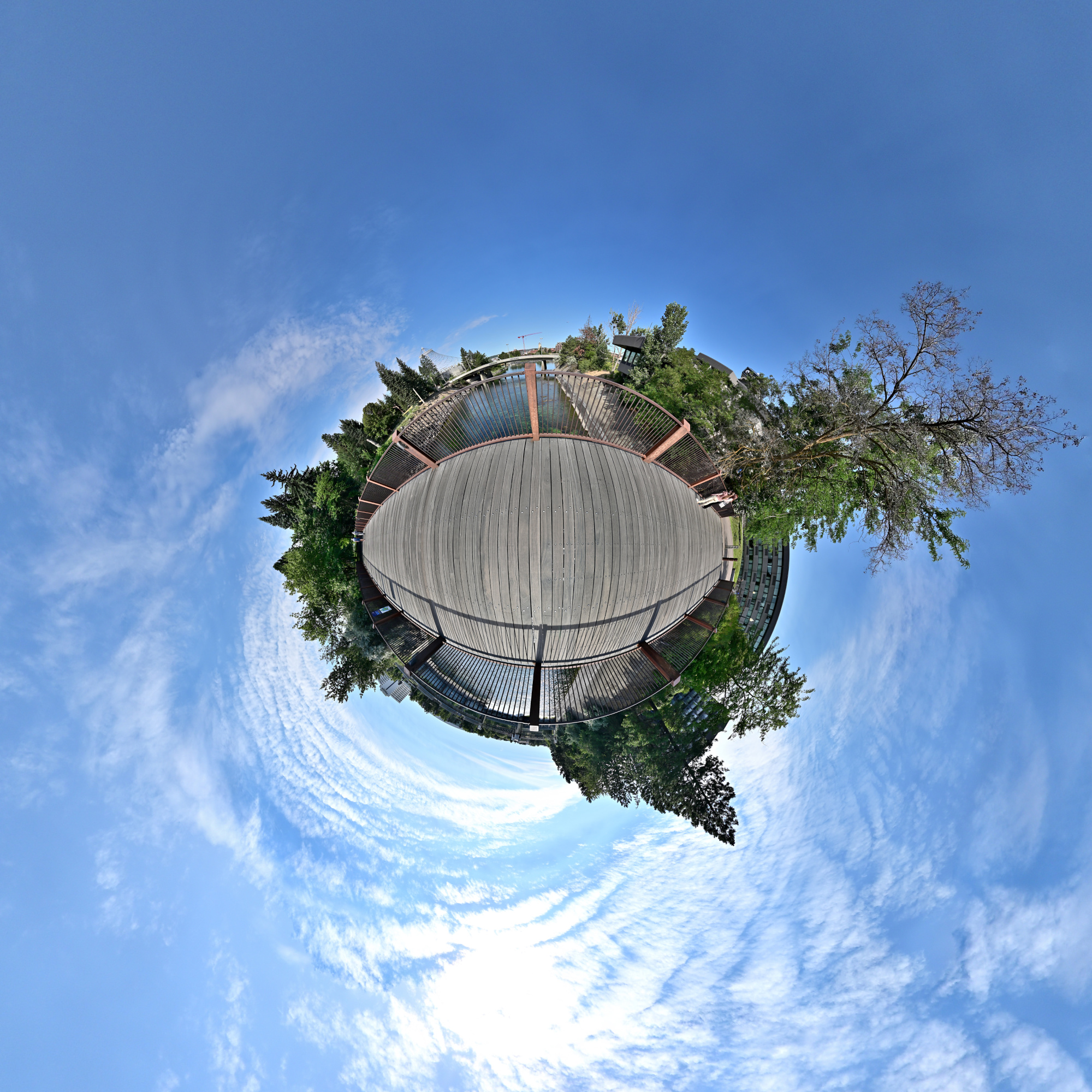
Interactive Panorama Spokane Falls Brücke


🌊 Spokane River
The Spokane River winds through the city, carving its path through stone and story alike. Along its banks, trails, bridges and parks invite exploration. The panoramic images captures the river's flow near one of its quieter bends, where reflections of sky and trees ripple across the surface.
Framed by Steel: A View Through the Bridge
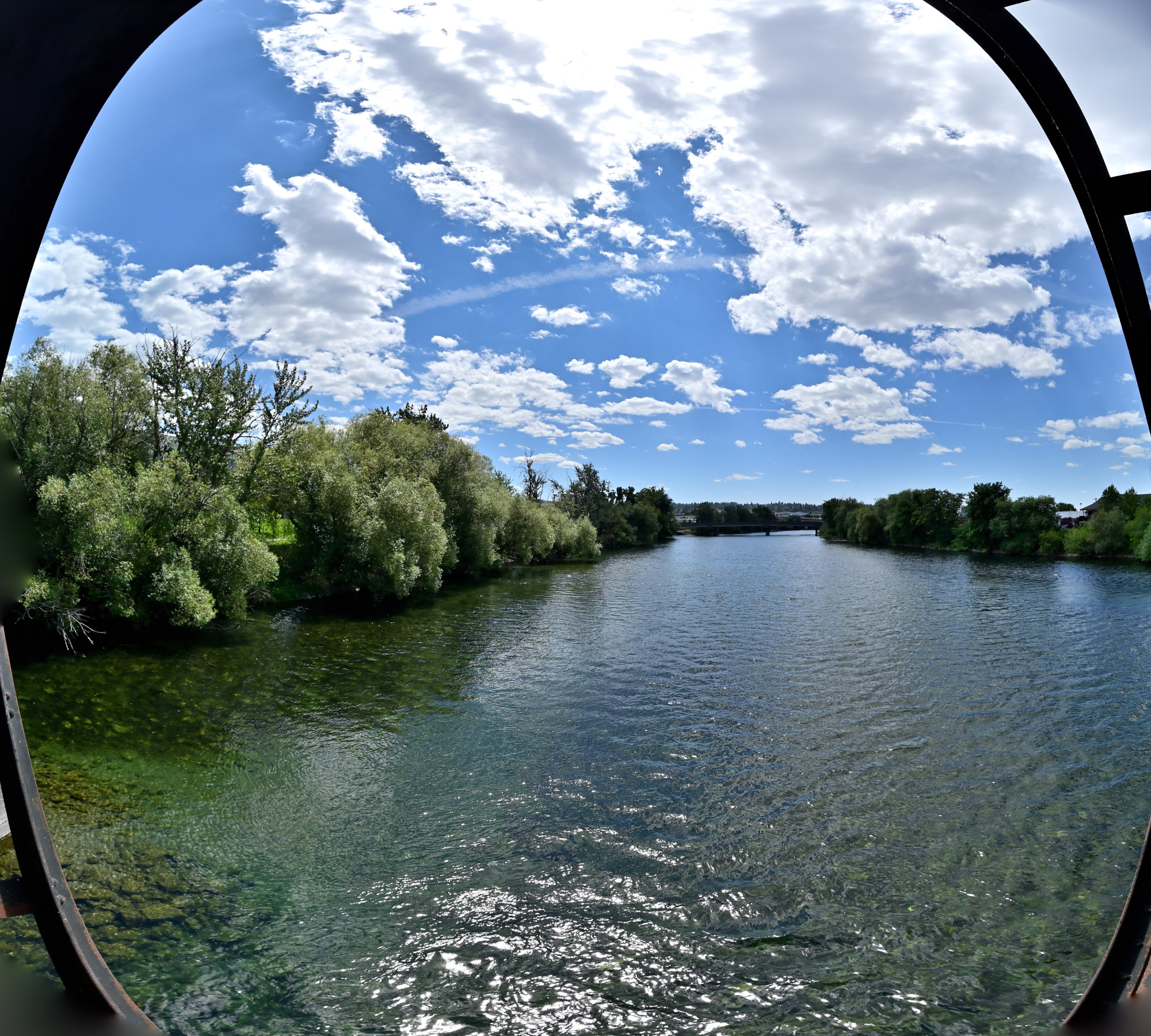
River bend

Sunlit Walk Along the Water

More Pictures Along the Riverside
The World Wide Panorama contribution for the event 'Why'
A single dead tree stands between the walkway and the riverbank. Its bare branches reaching skyward in contrast to the lush greenery around it.
Why did it die? Was it disease, drought, or simply age?
Its presence adds a quiet tension to the scene, a reminder that even in places full of life and movement, stillness and decay have their place too.Interactive Panorama Spokane River
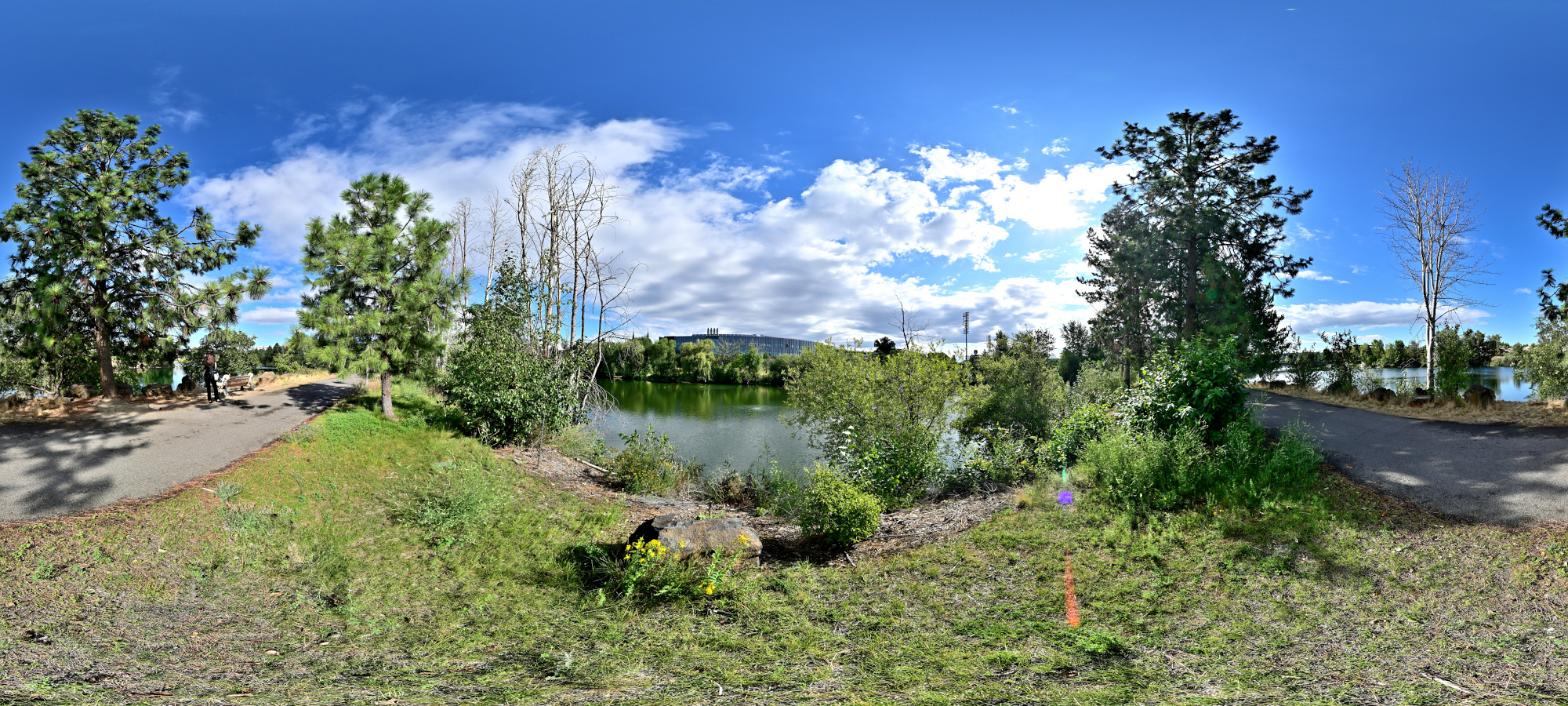

🏢 Apartment Where We Stayed
Spokane offers a wide spectrum of hotel experiences, like a roulette wheel of hospitality. On one end, you've got places like the Ramada by Wyndham, where the décor is "early abandonment", the guests are... let's say colorful, and the rooms come with a complimentary layer of grime. On the other end, there are sleek 4-star hotels that promise luxury but sometimes deliver lukewarm service and Yelp reviews that read like cautionary tales. And in the middle? The classic 3-star American hotel, where breakfast includes a waffle machine, questionable eggs, and the lingering scent of disappointment. Choose wisely, or at least pack your sense of humor.
We were lucky. Tucked into a quiet neighborhood close to the campus, our apartment served as a perfect base for exploring the city. With morning light filtering through the windows and the scent of pine in the air, it offered a peaceful retreat.
Interactive Panorama Apartment 1

Interactive Panorama Apartment 2
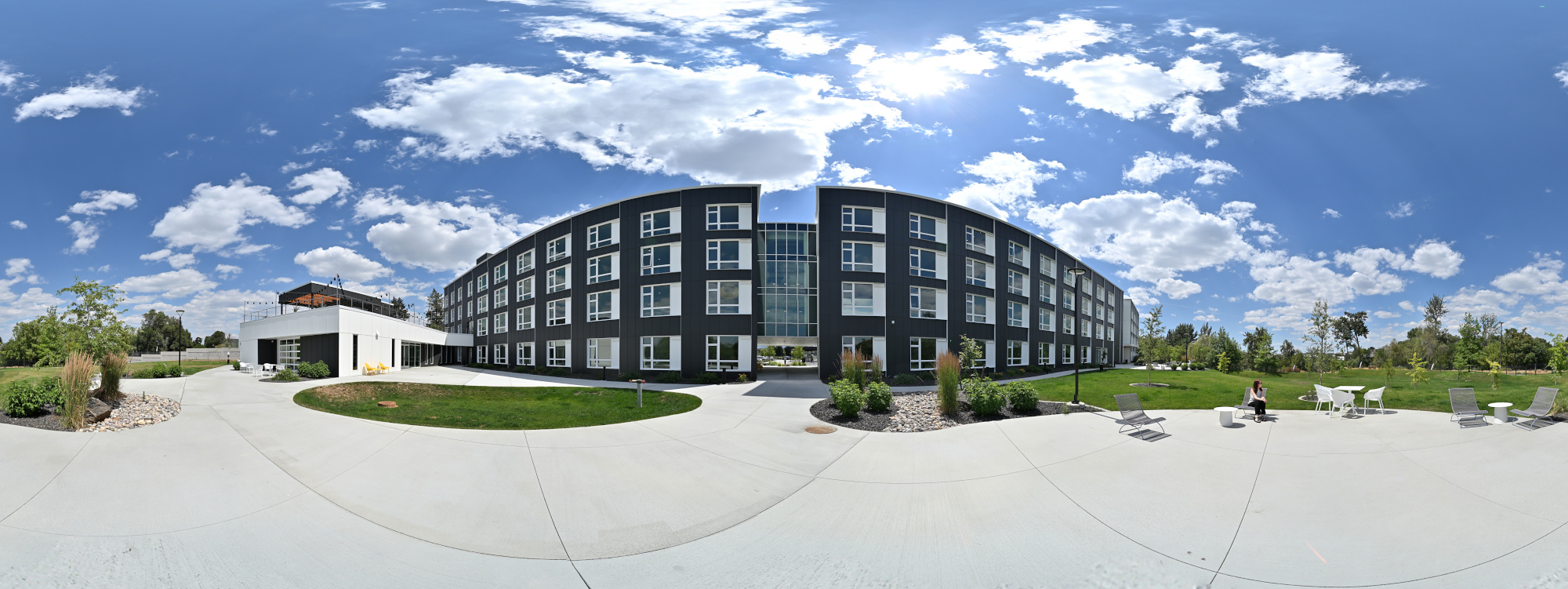
✈️ Airport
Our journey ends where we first arrived, and we leave Spokane behind with memories captured in light and lines. Spokane International Airport welcomes visitors with a mix of regional charm and modern convenience. The terminal's open design and surrounding pine-dotted landscape offer a first glimpse of the Inland Northwest's character.
1/80s f/5,6 ISO 200/24° f=7,5mm
1/80s f/5,6 ISO 160/23° f=7,5mm
The 737 arrives
Taxi-in
Passenger boarding bridge attaches
Start refueling and unloading
The windows facing the airfield are tinted with a subtle blue hue, and be corrected by adjusting the white balance (photos were taken using the sunlight white balance setting).
Forty minutes later, we rolled into Seattle and the Spokane chapter came to a close, pixels packed, panoramas pending, and the last bit of sunlight archived in RAW.
🌥️ Above the Clouds – To Spokane and Back
Every journey begins with a takeoff and ends with a landing — but what happens in between is often the most quietly beautiful. This segment captures both the outbound flight into Spokane and the return above the rugged silhouettes of the Cascade Mountains. From the first lift-off into layered skies to the final descent through fading light, the airborne chapters of this trip offer shifting perspectives: pine forests from above, rivers winding like thoughts, and clouds that blur the boundary between memory and motion.
All images and clips were captured using my Android phone.
SEA - GEG1
Boarding

Taxi out from Seattle
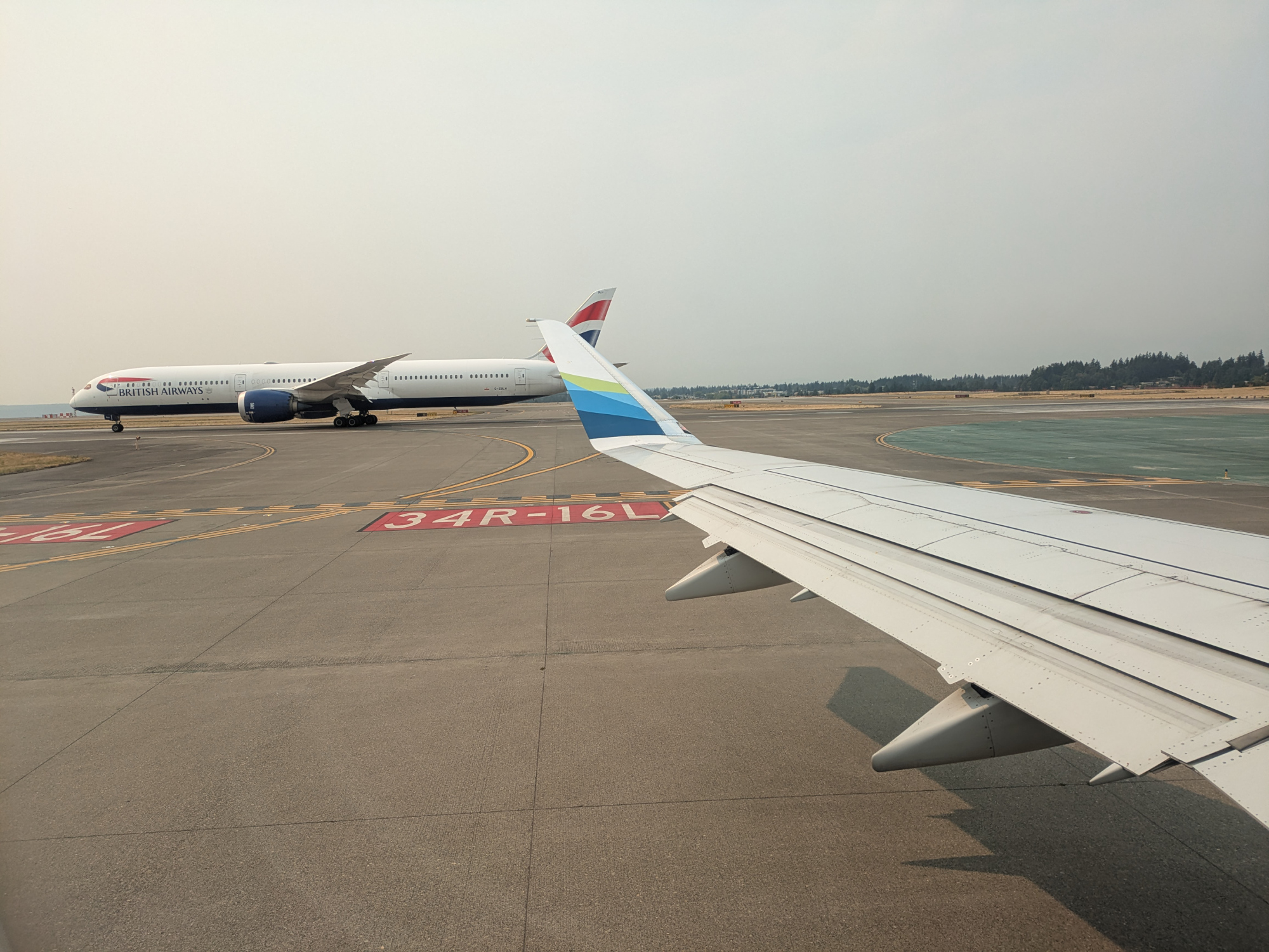
Our turn now, with all the other Bombers lined up for their turn

Takeoff
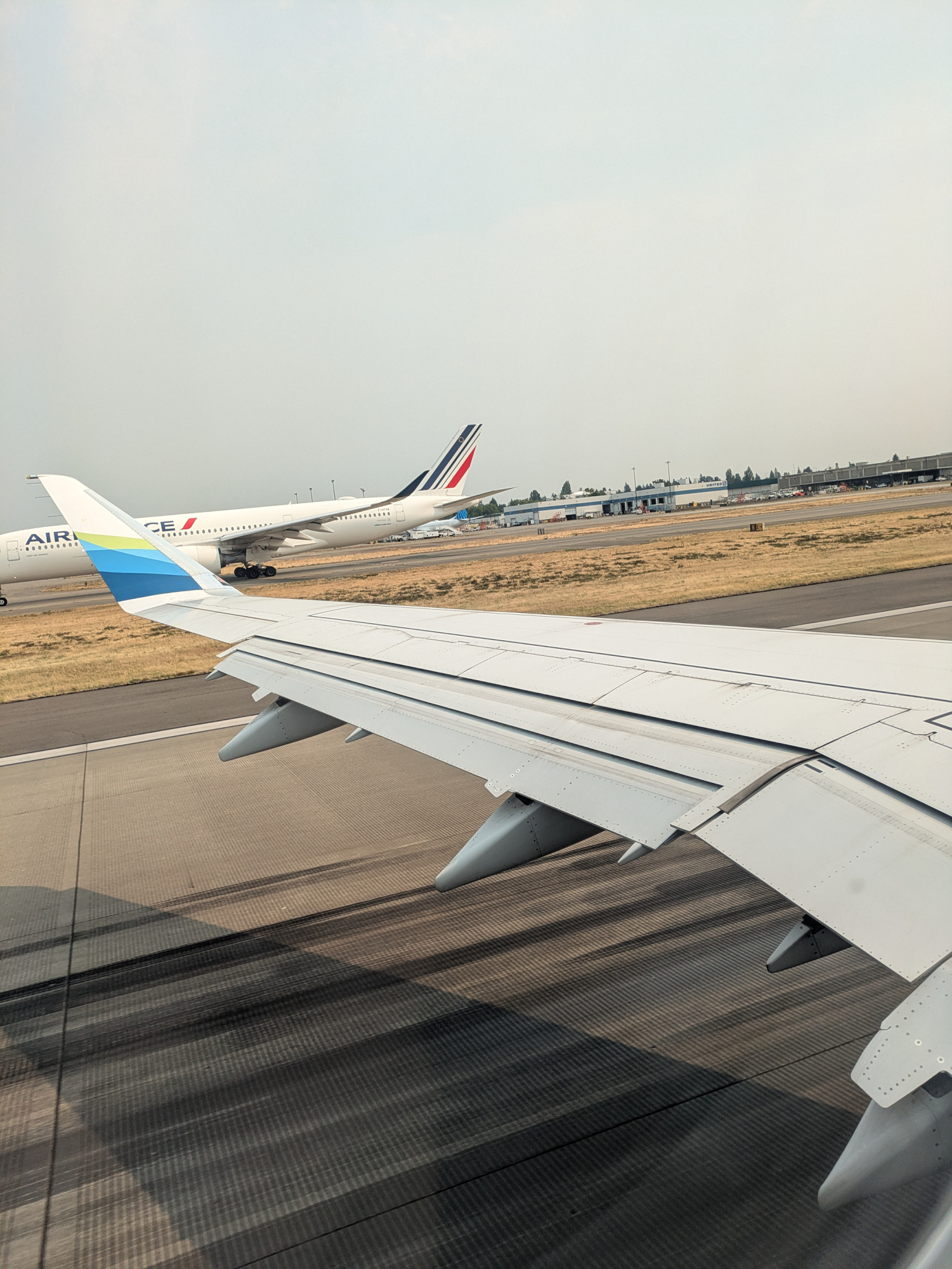
Imagine being stuck in that one for 10 hours. It is just you, sushi, and the slow unraveling of time.
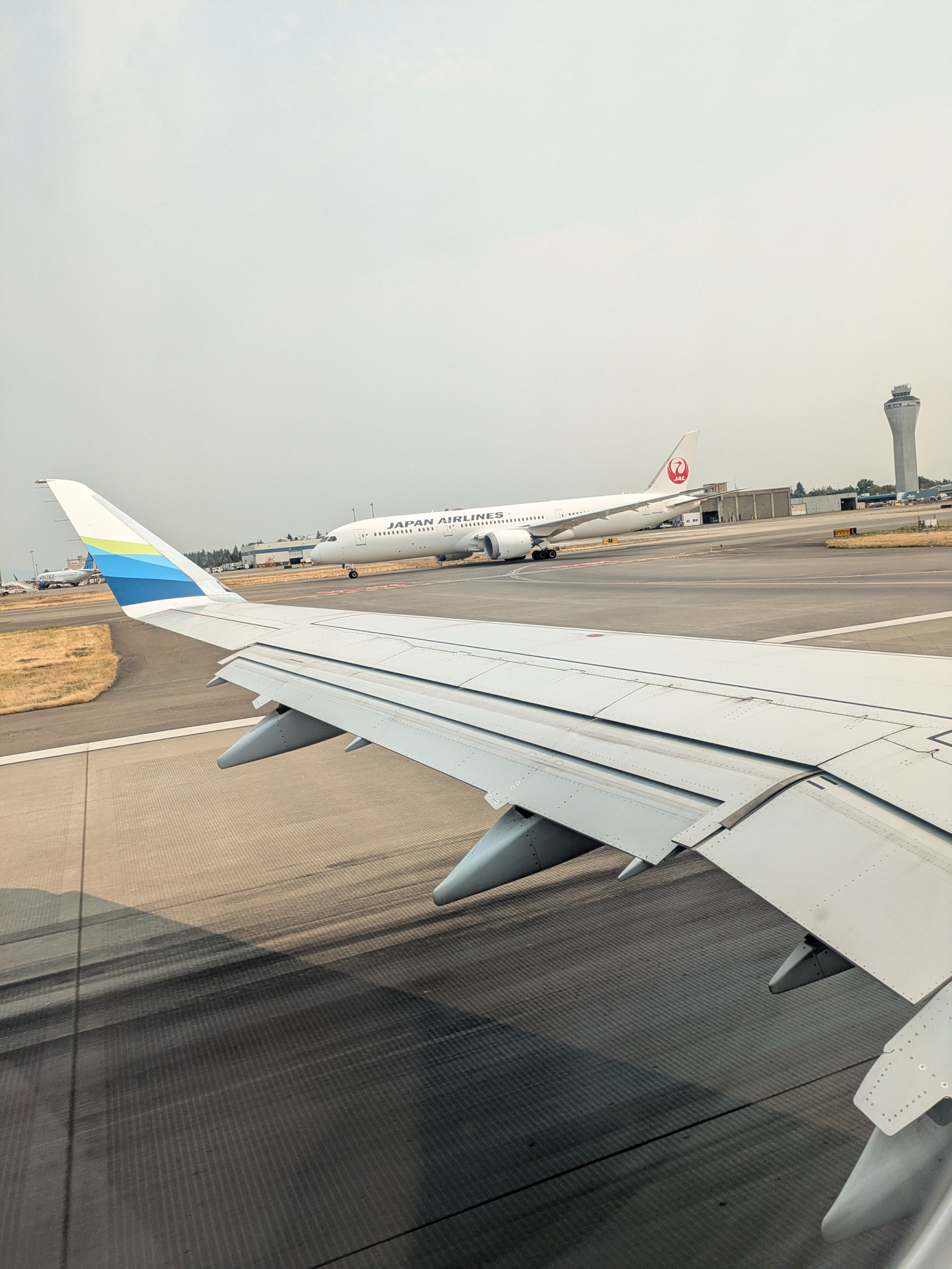
View on the Main Terminal

The South Terminal. The empty spot is S11, where the Frankfurt flight LH491 departs.
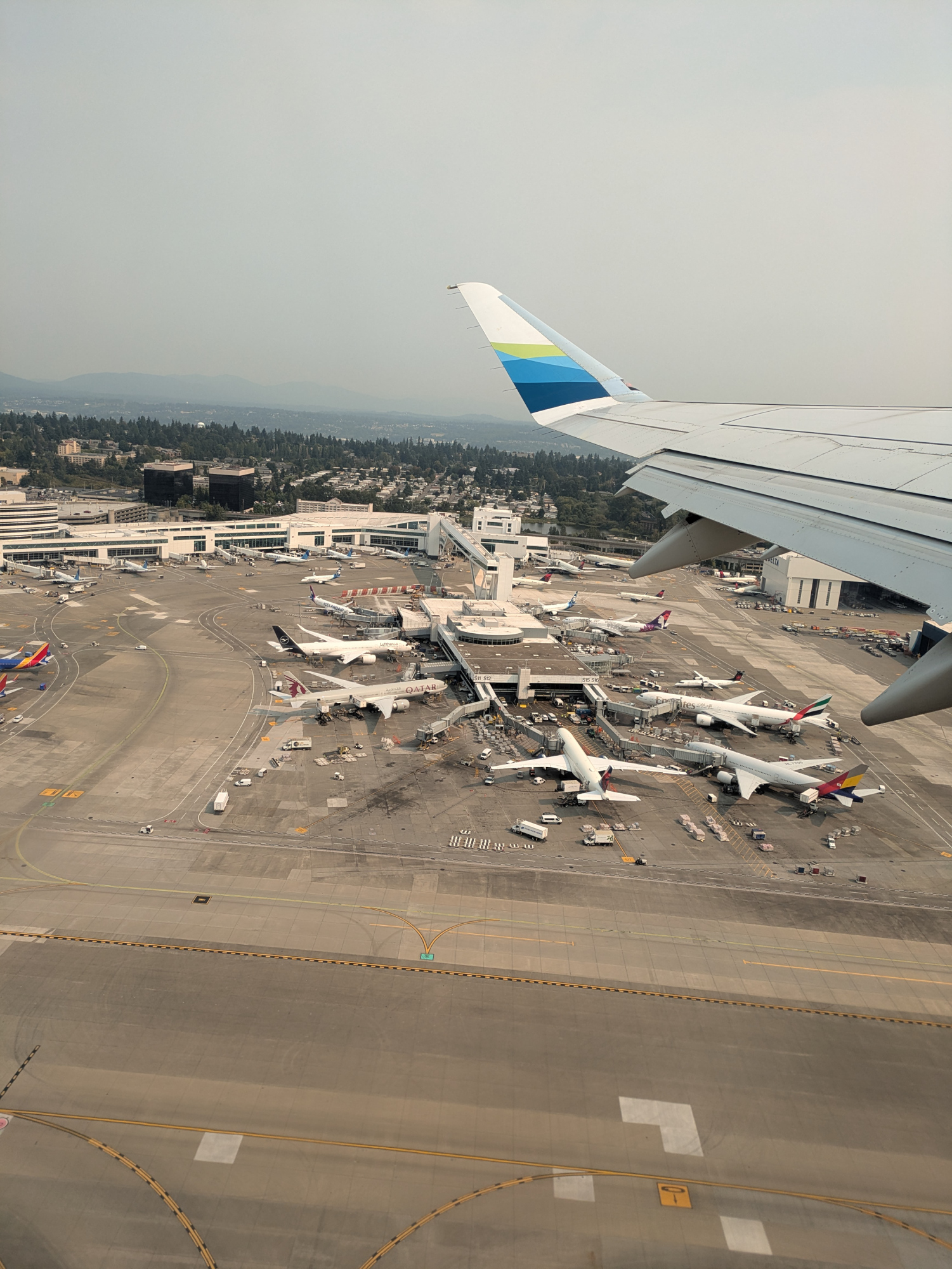
This view shows Steel Lake at the bottom and Lake Dolloff at the top, separated by Interstate 5
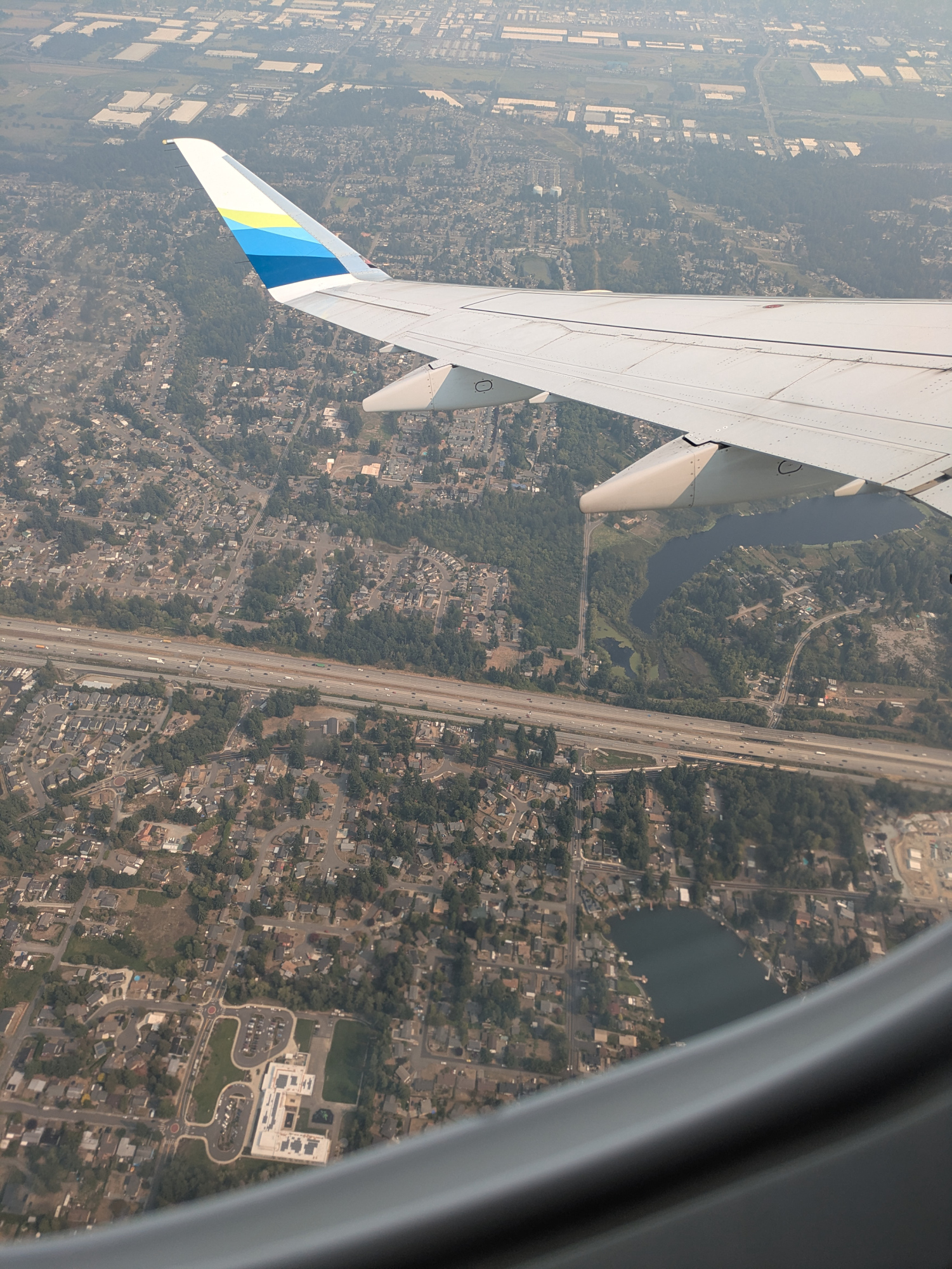
Landing in Spokane
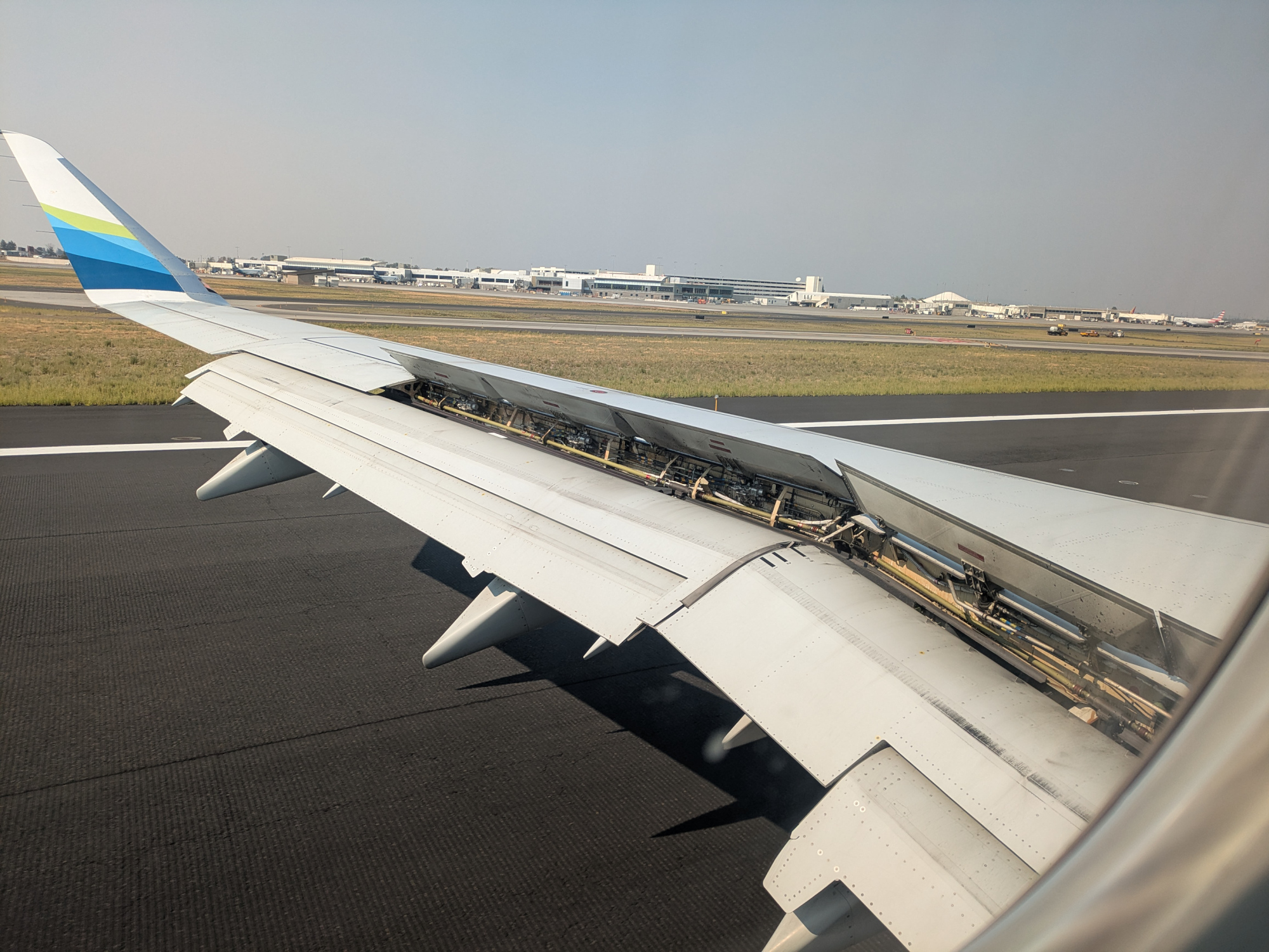
GEG - SEA
Taxi out from Spokane
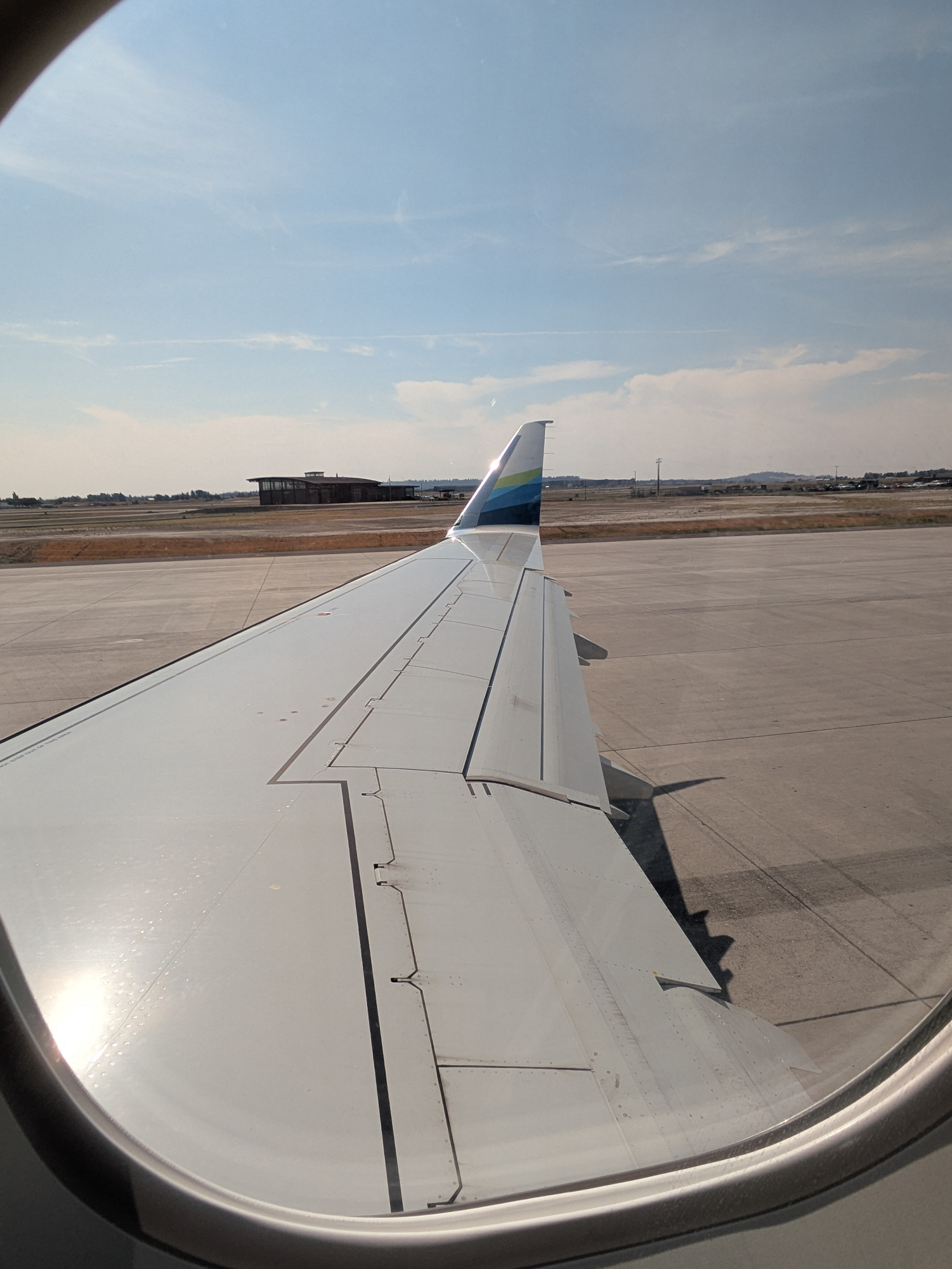
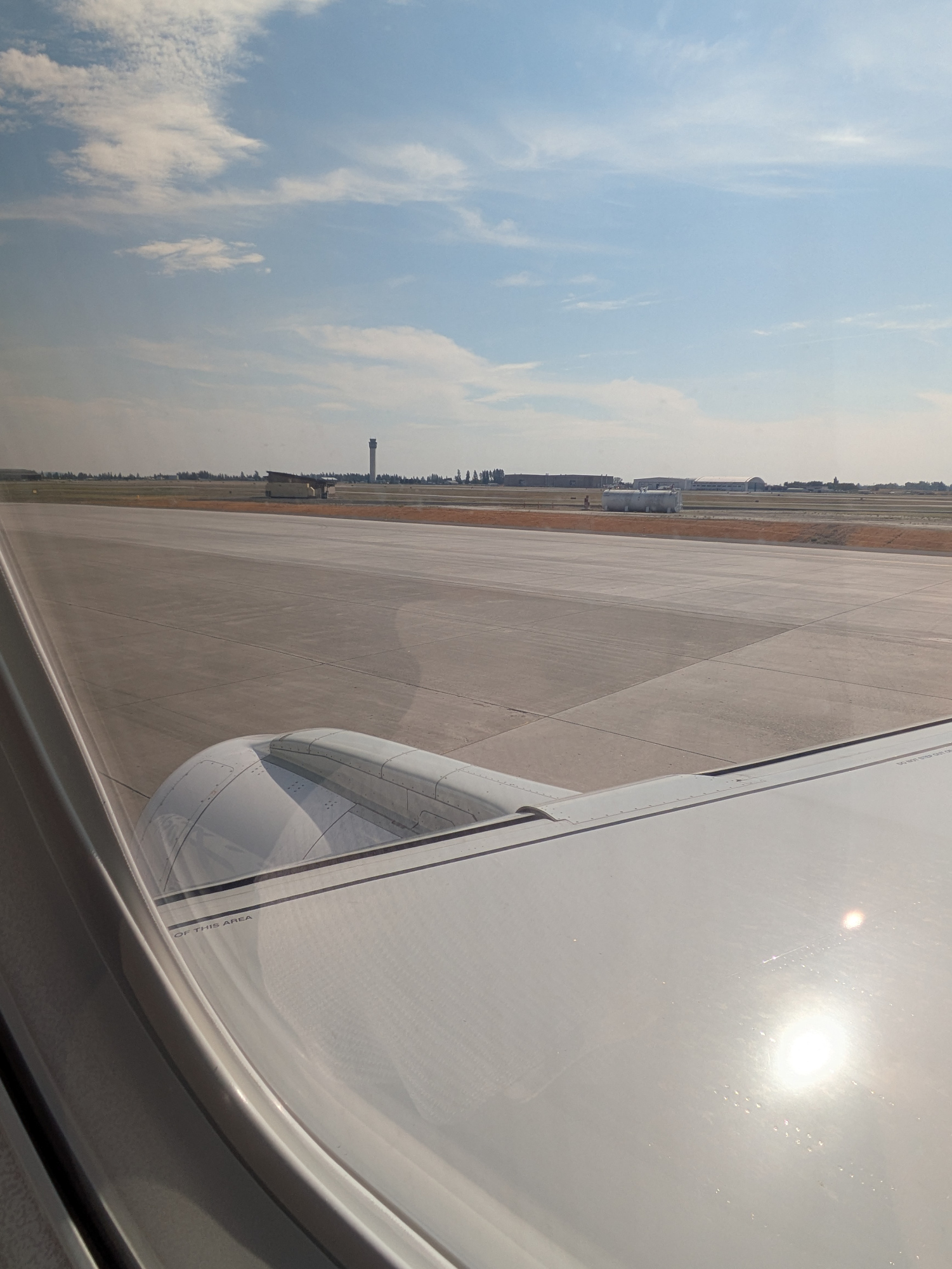
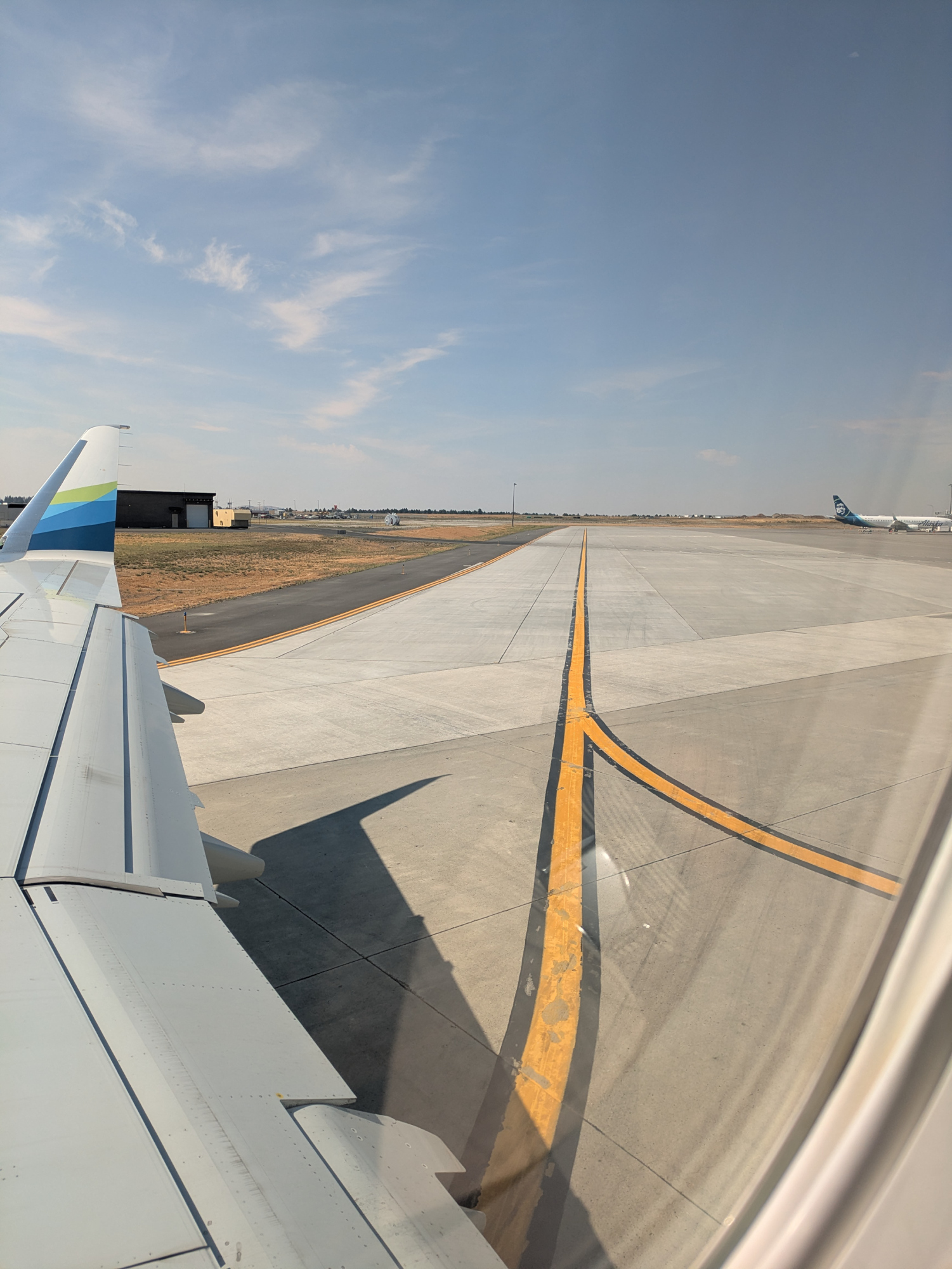
That view is half of Spokane Airport
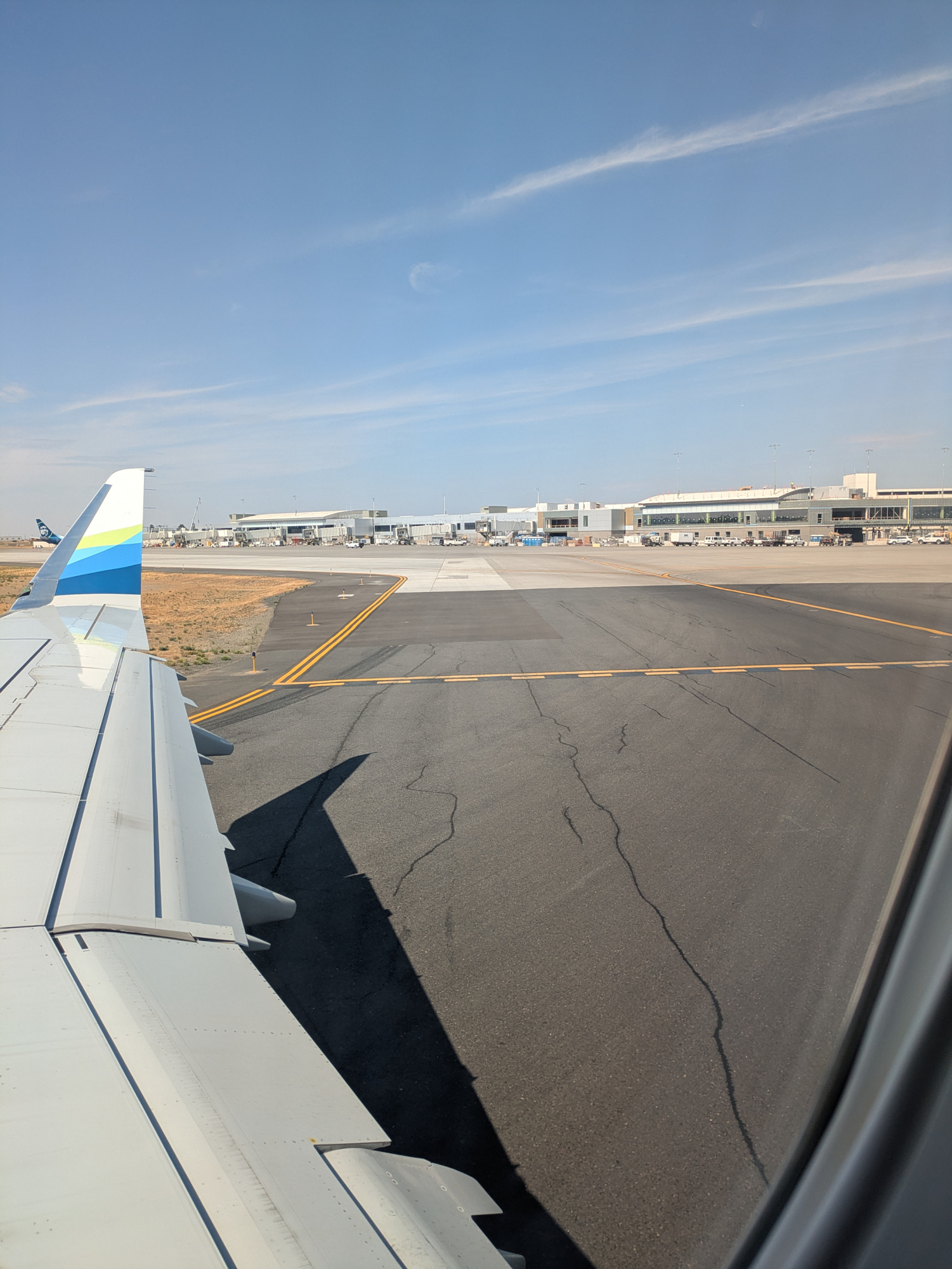
Spokane Taxi Out – In Motion
Takeoff
GEG National Forest (Unofficial)
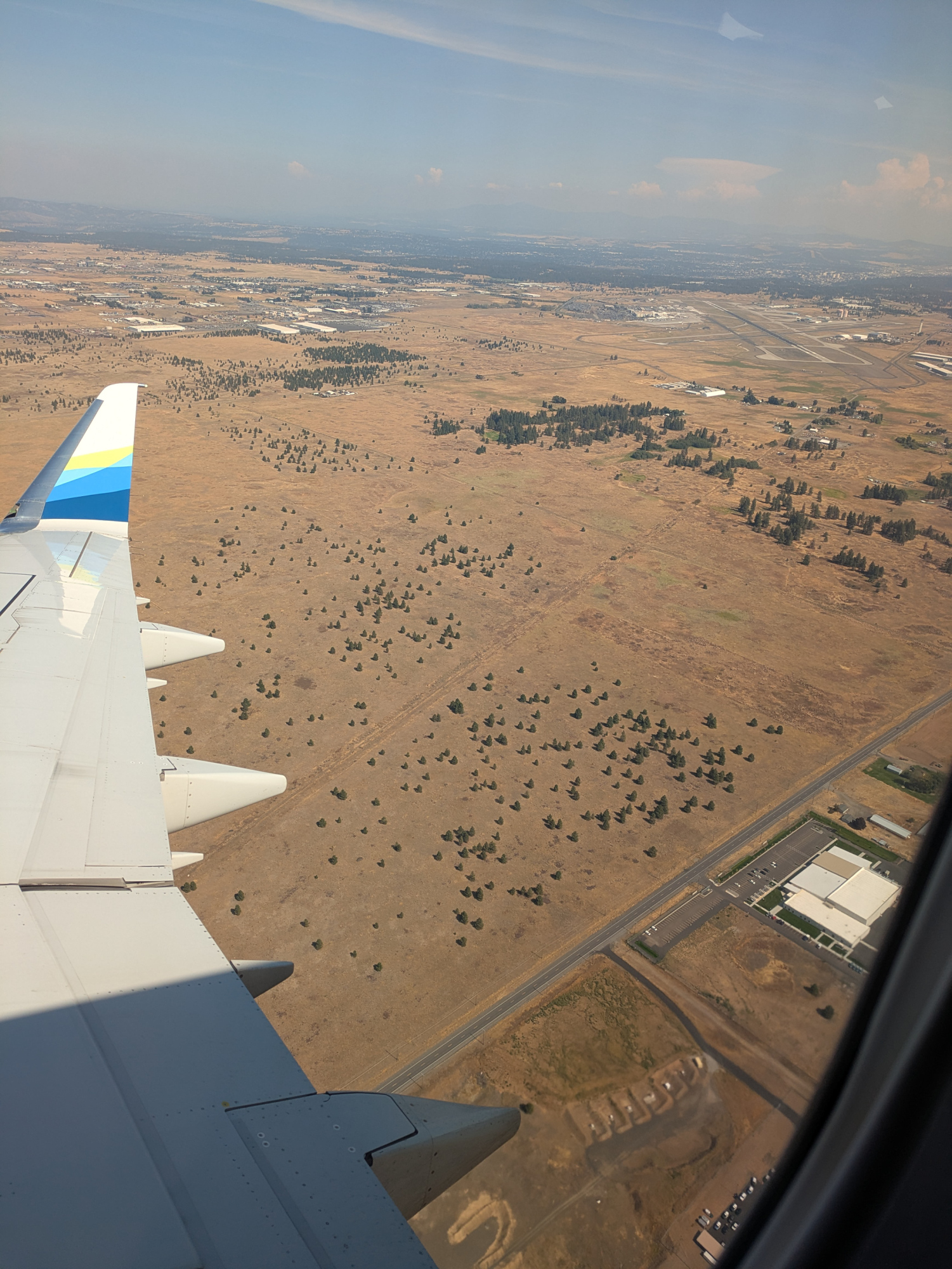
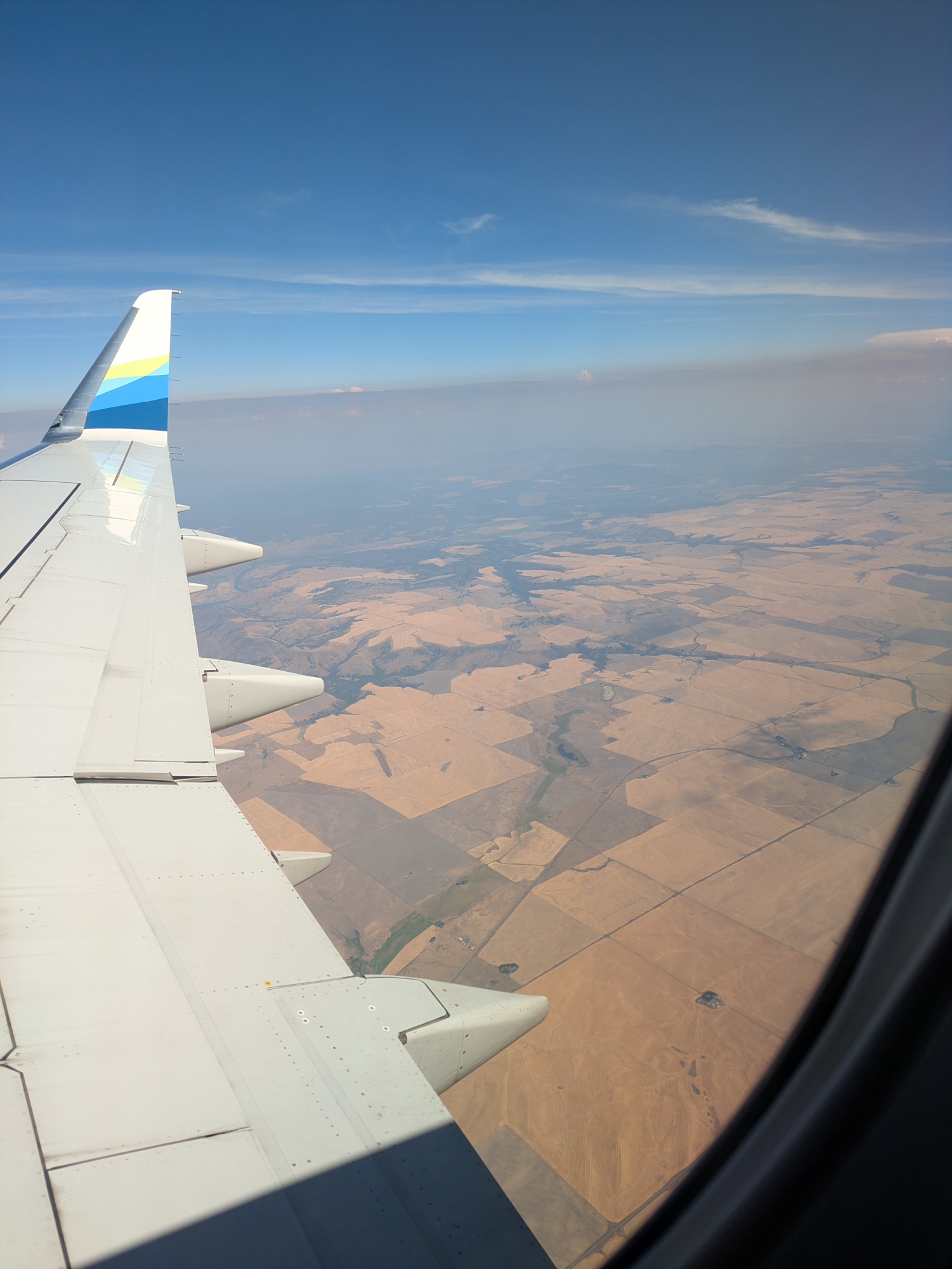

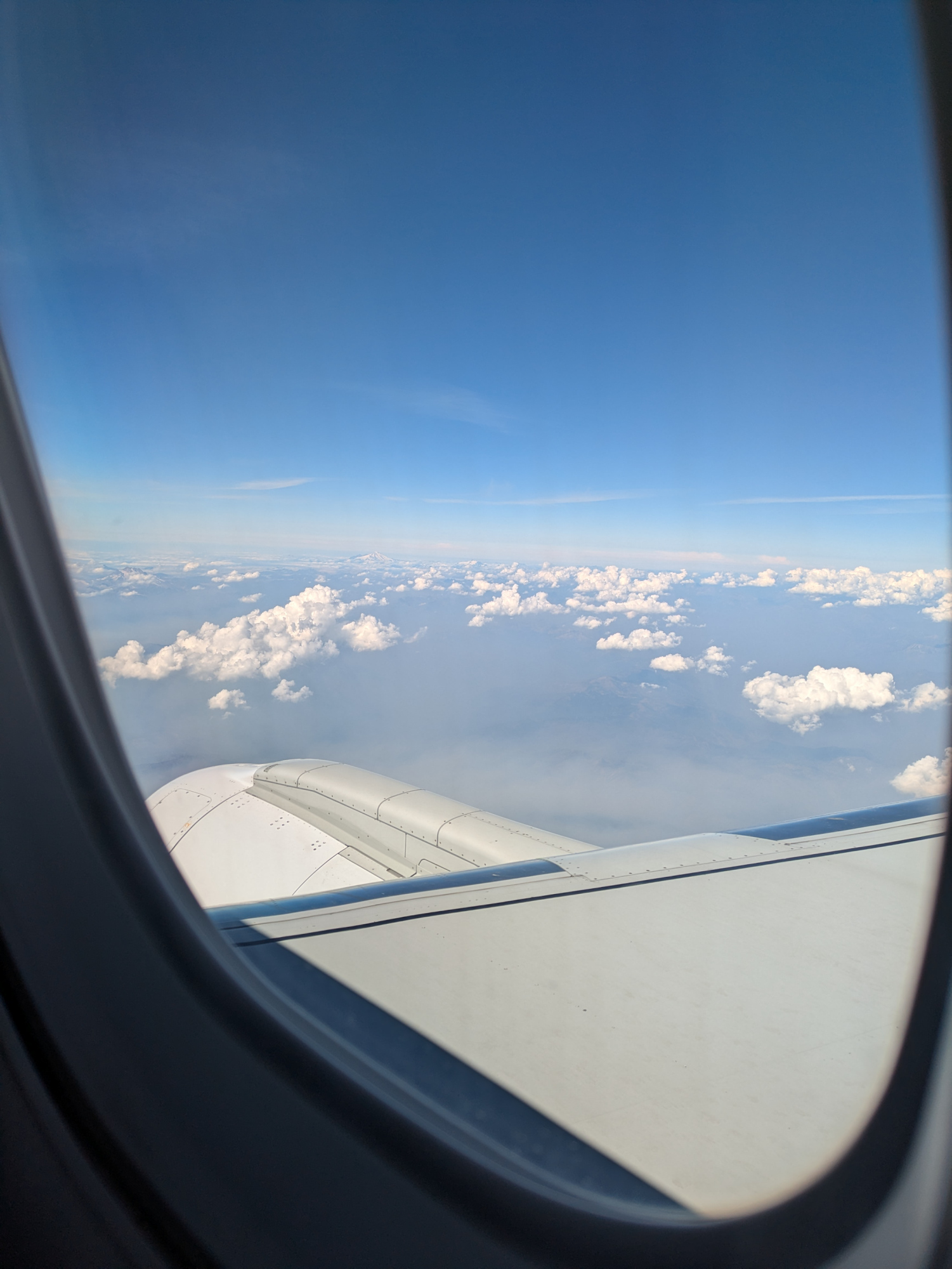
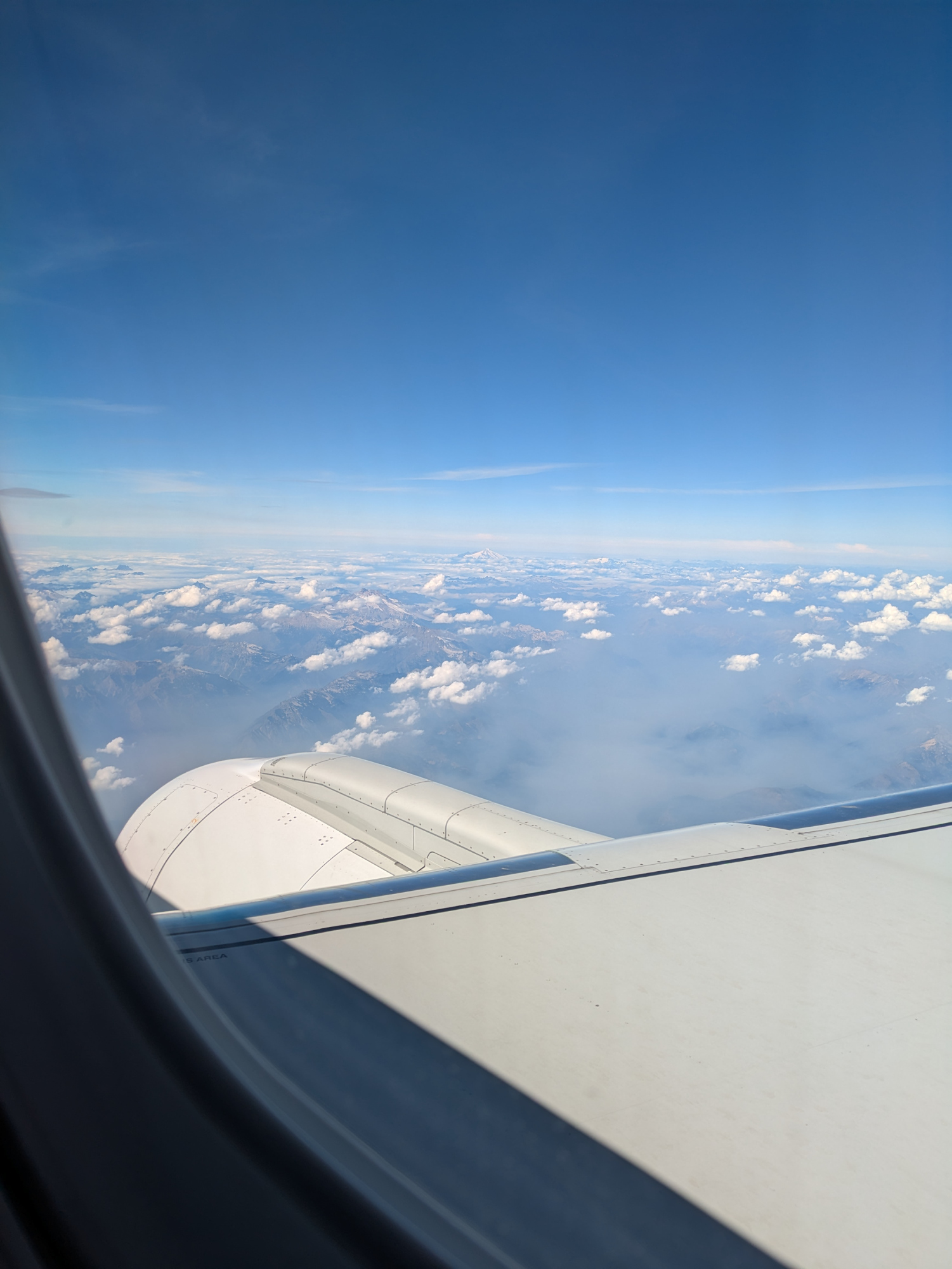
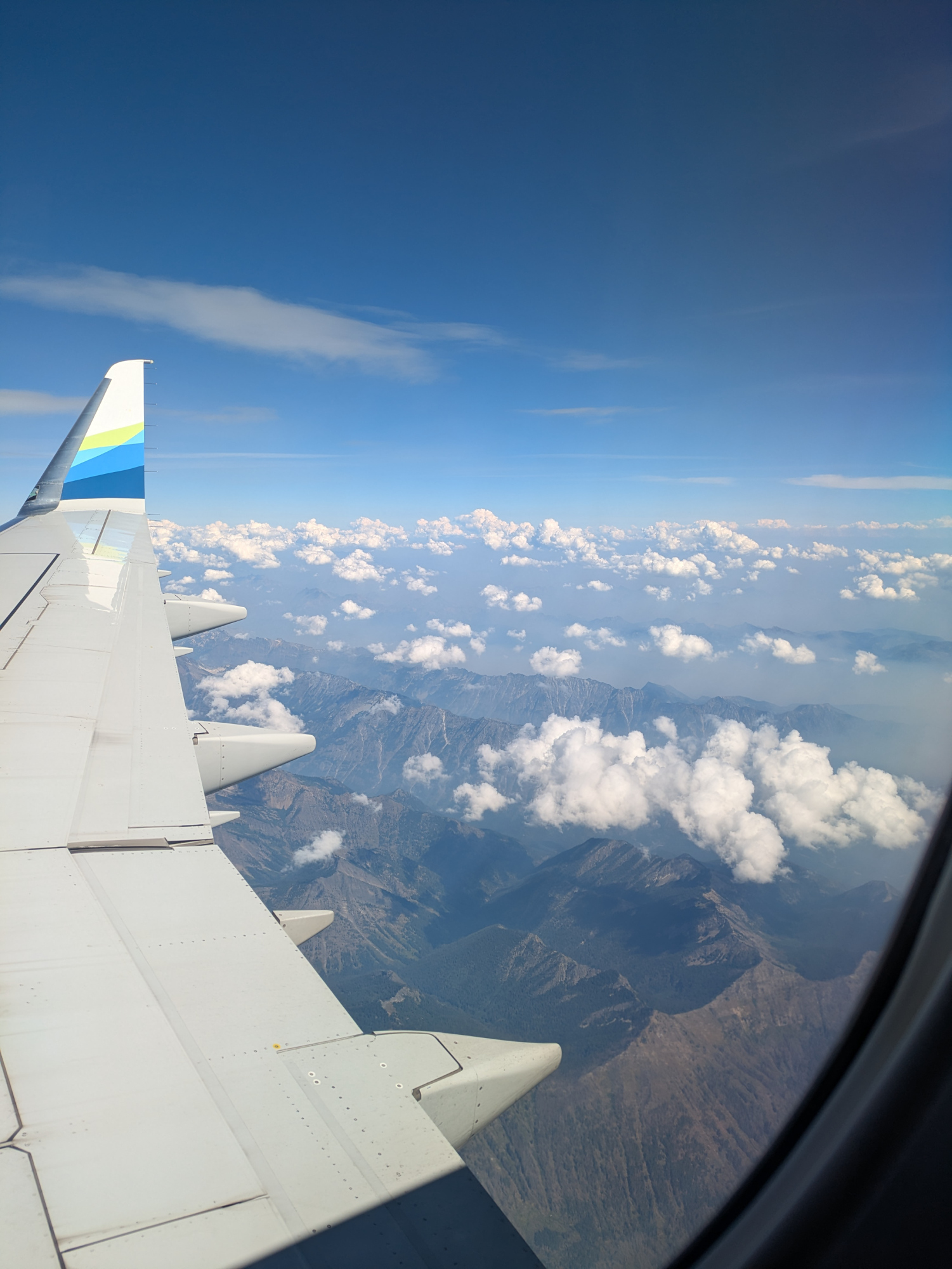
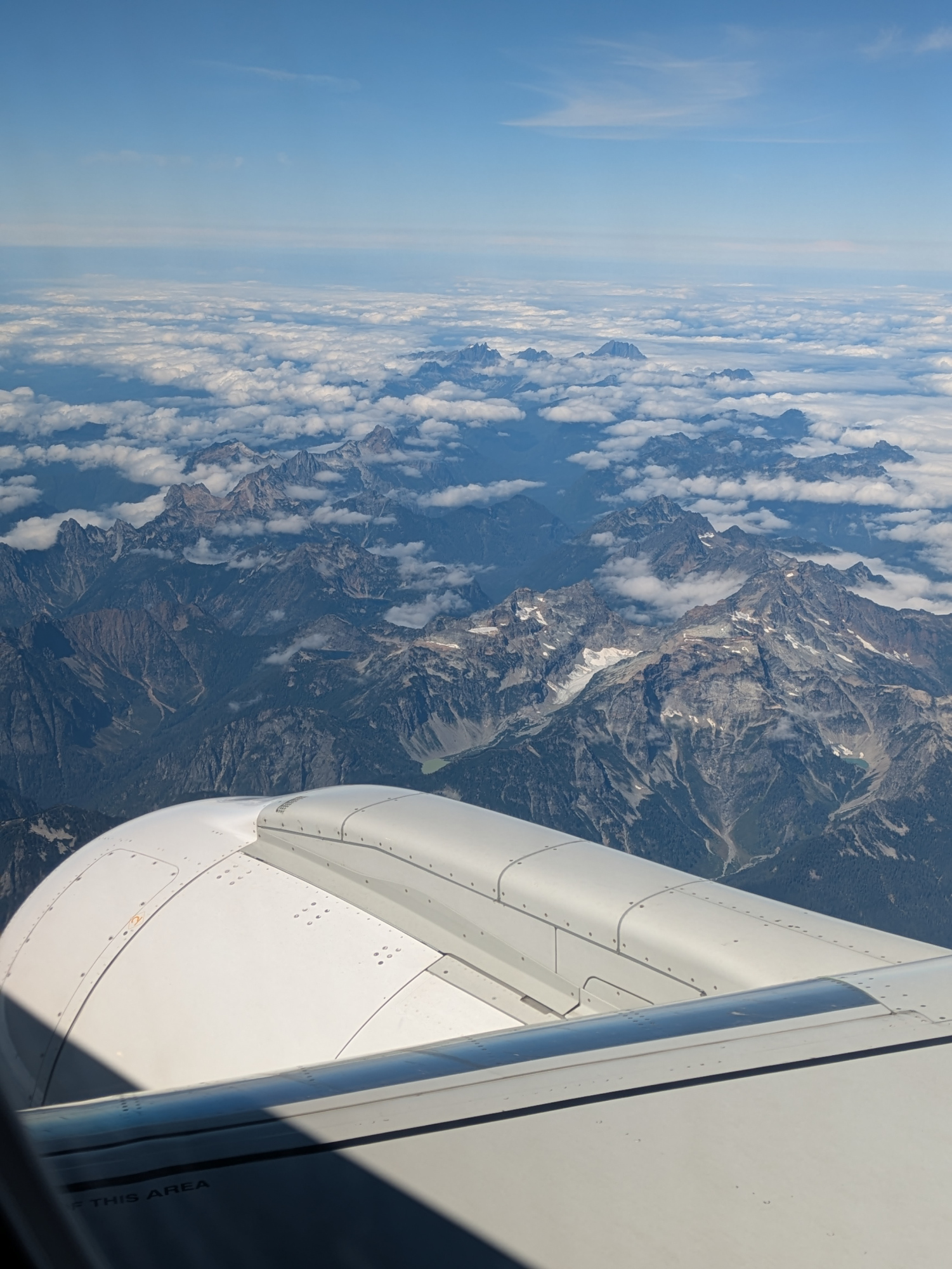
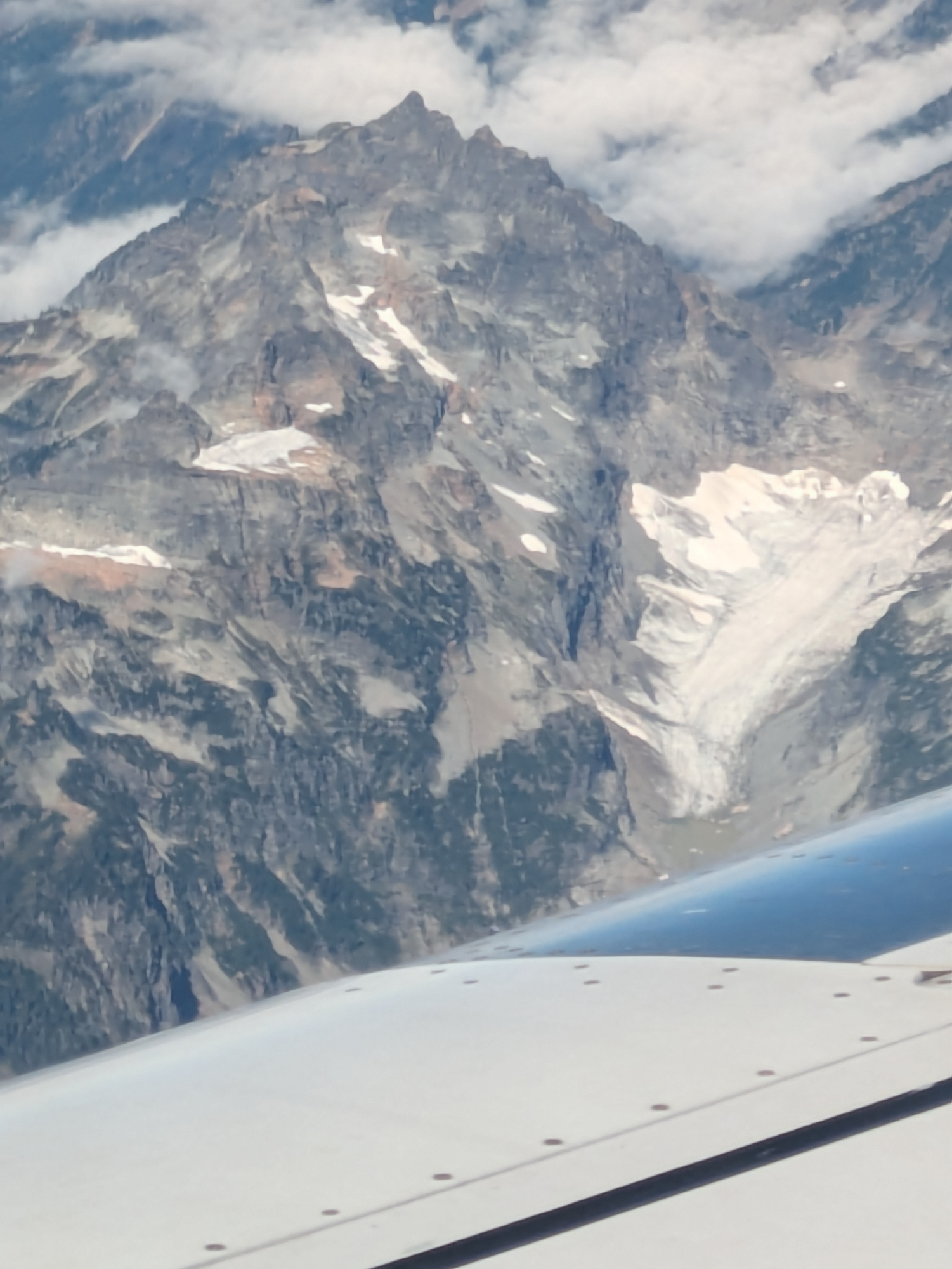
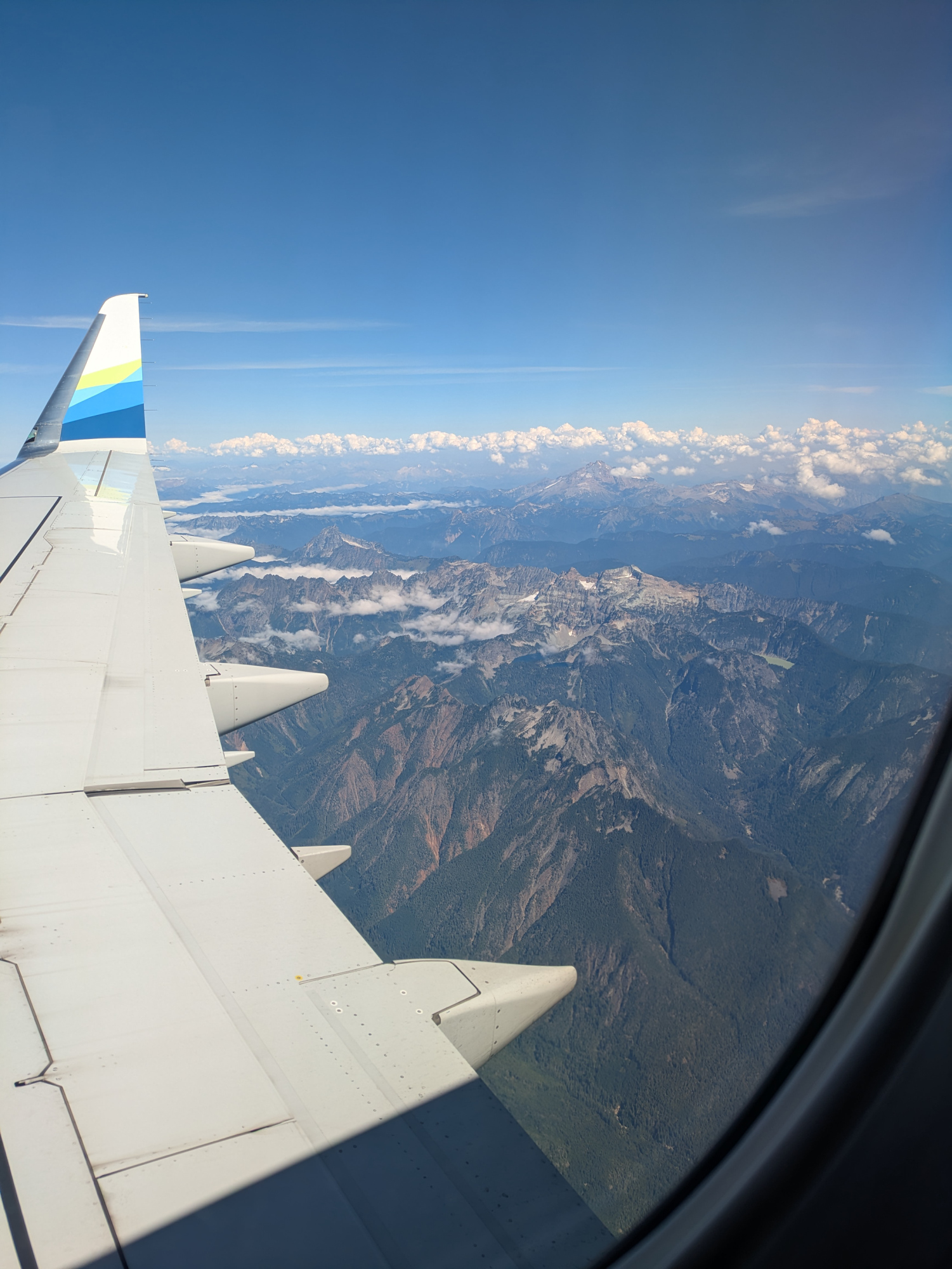
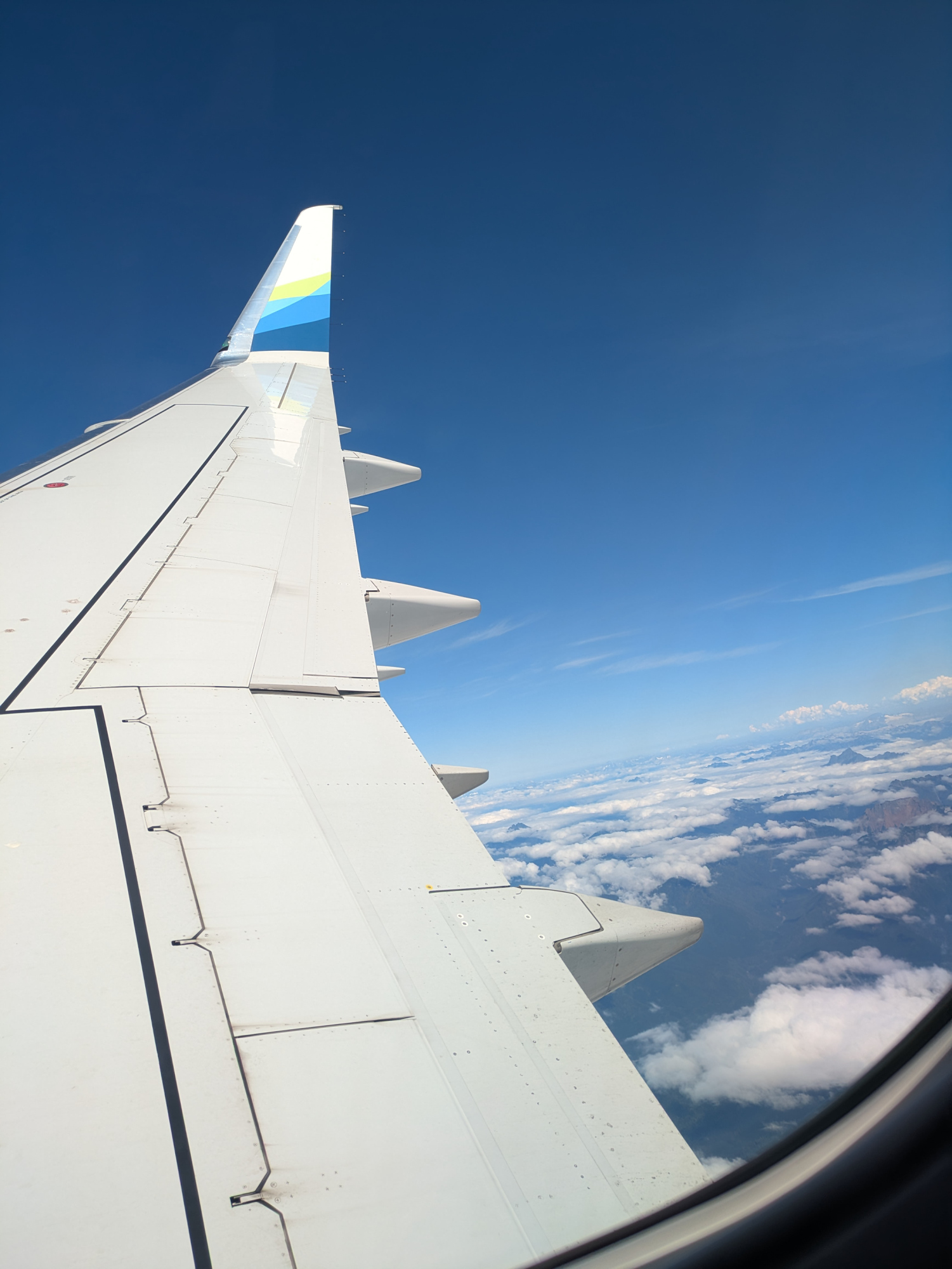
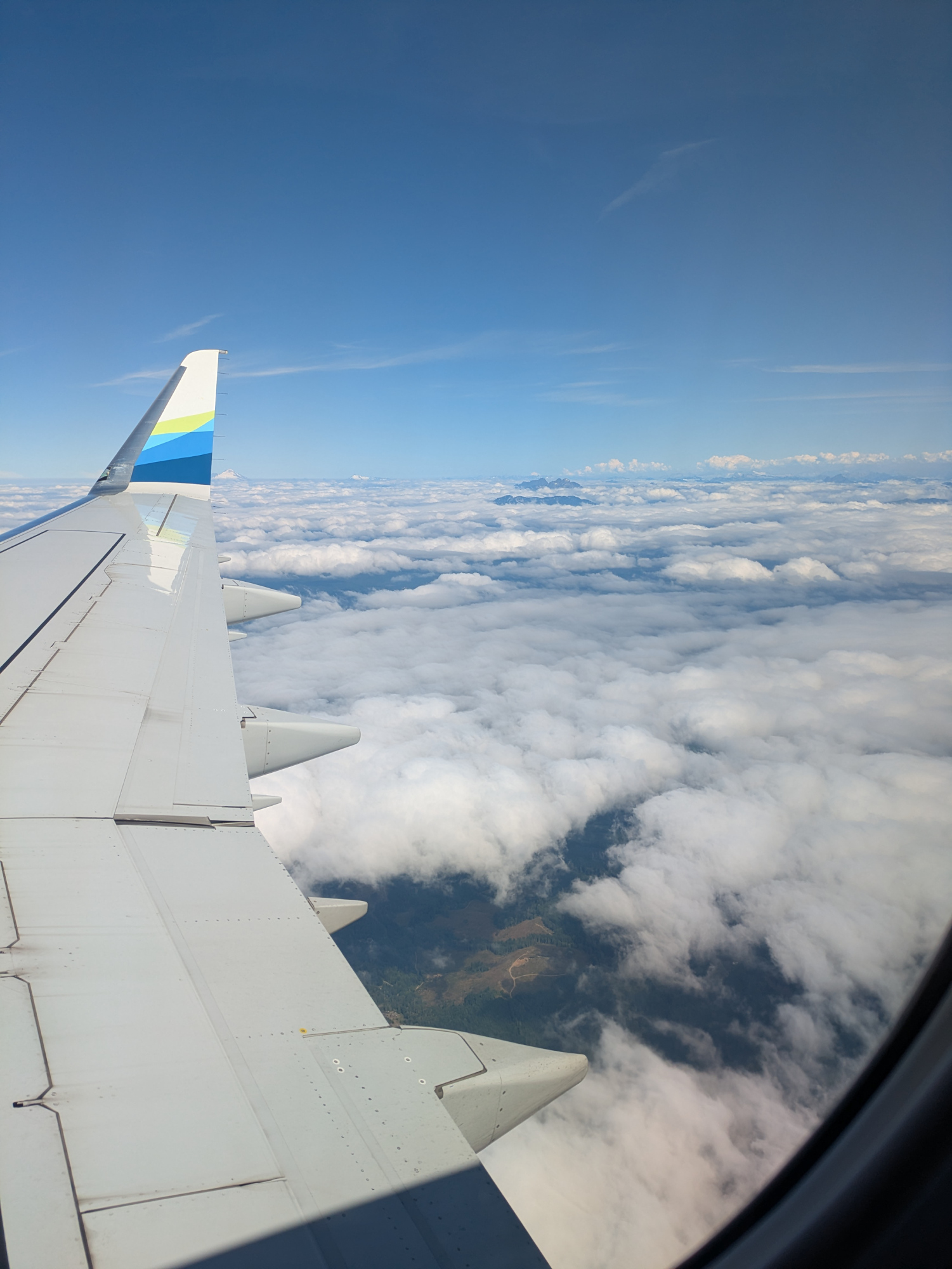
The Space Needle
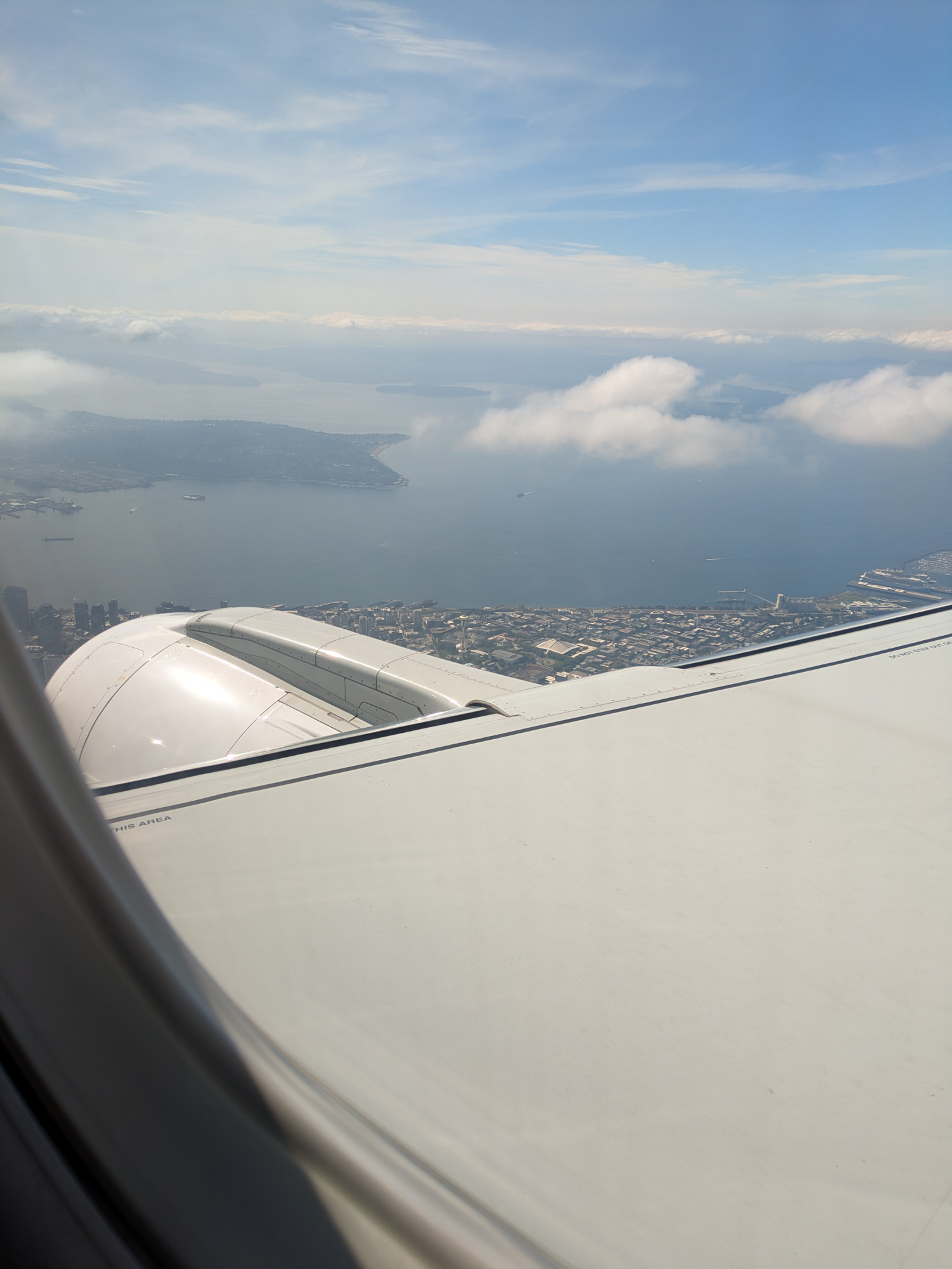
Landing in Seattle
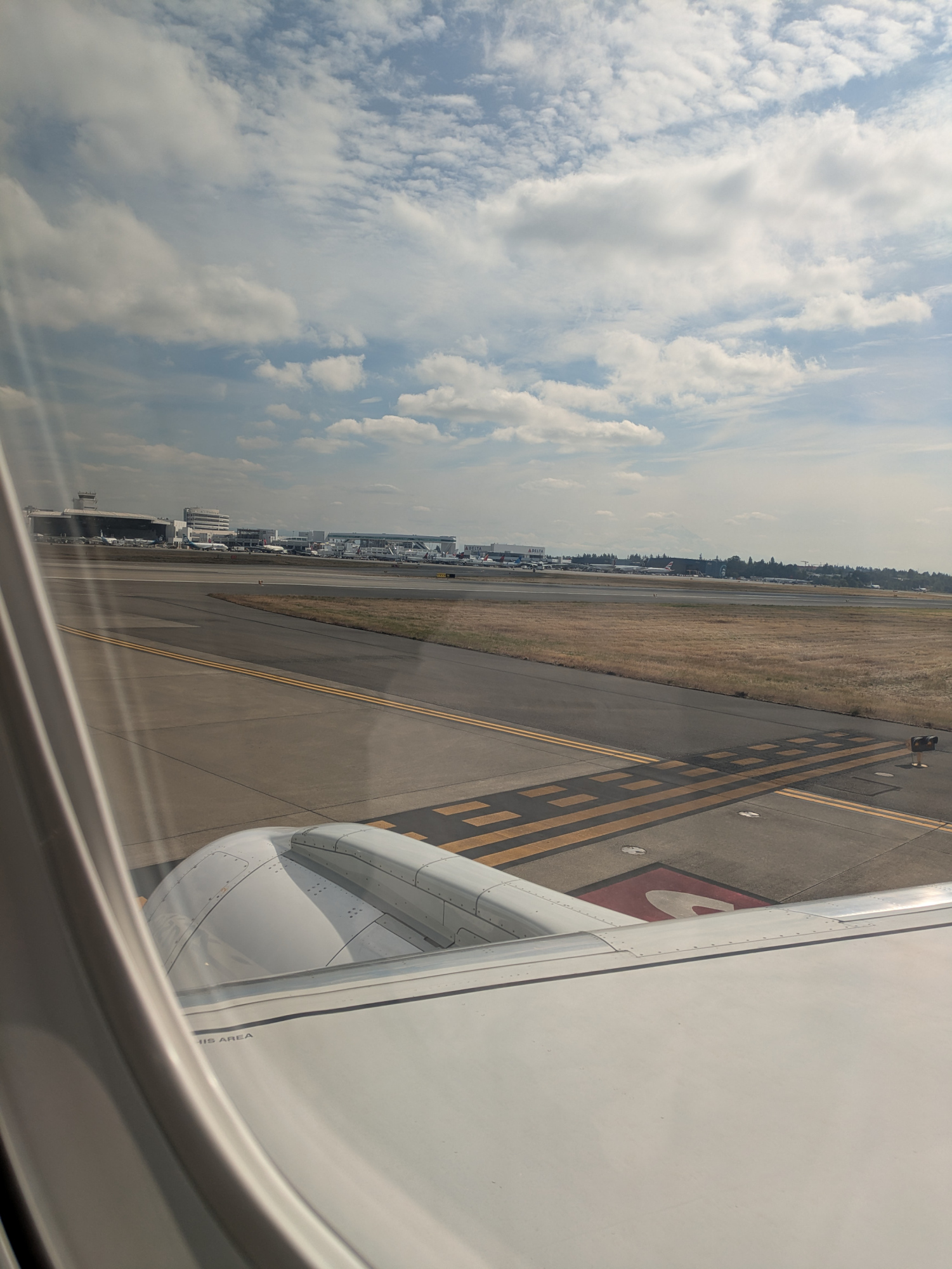
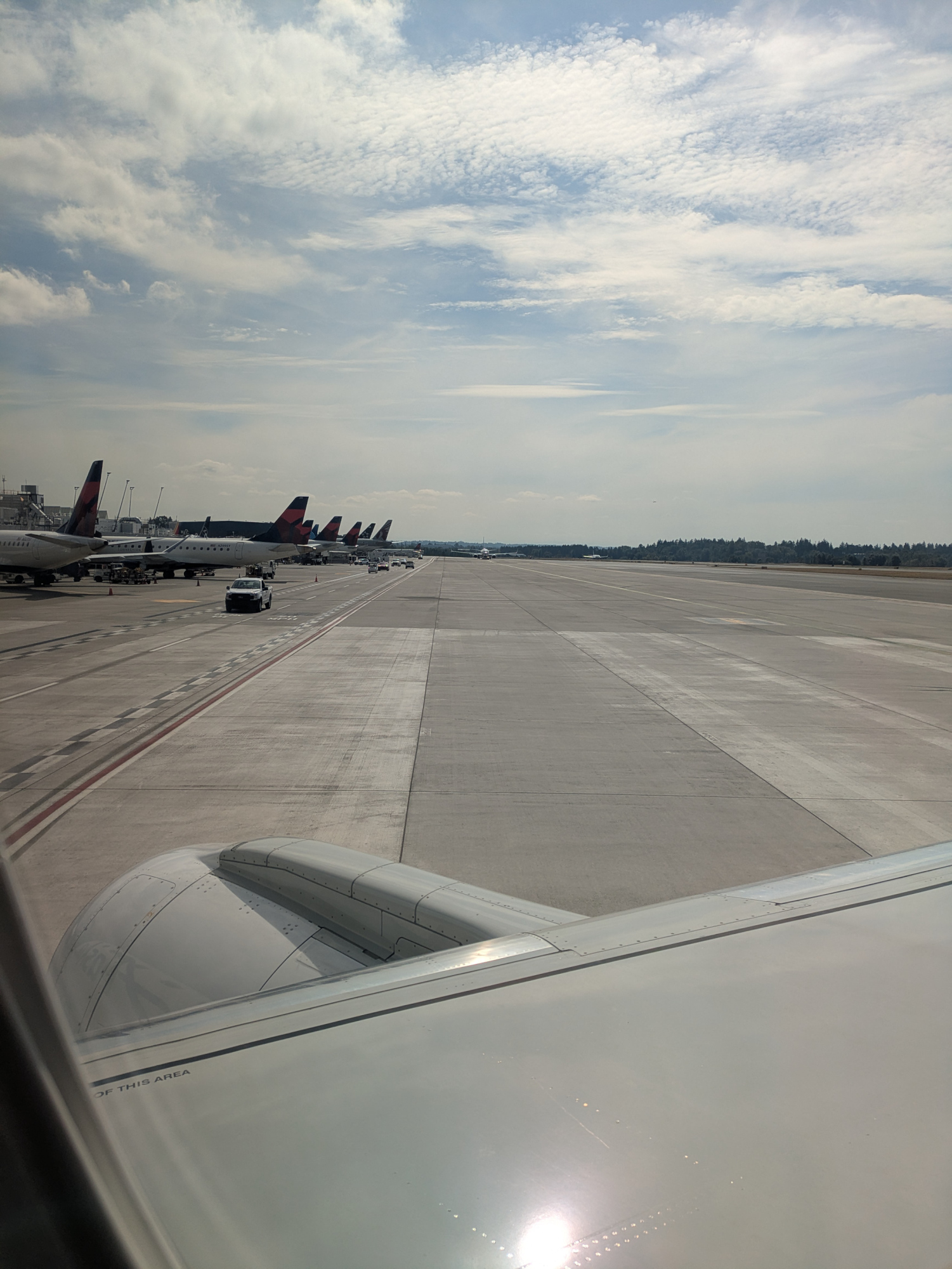
Arrived at Gate Q2
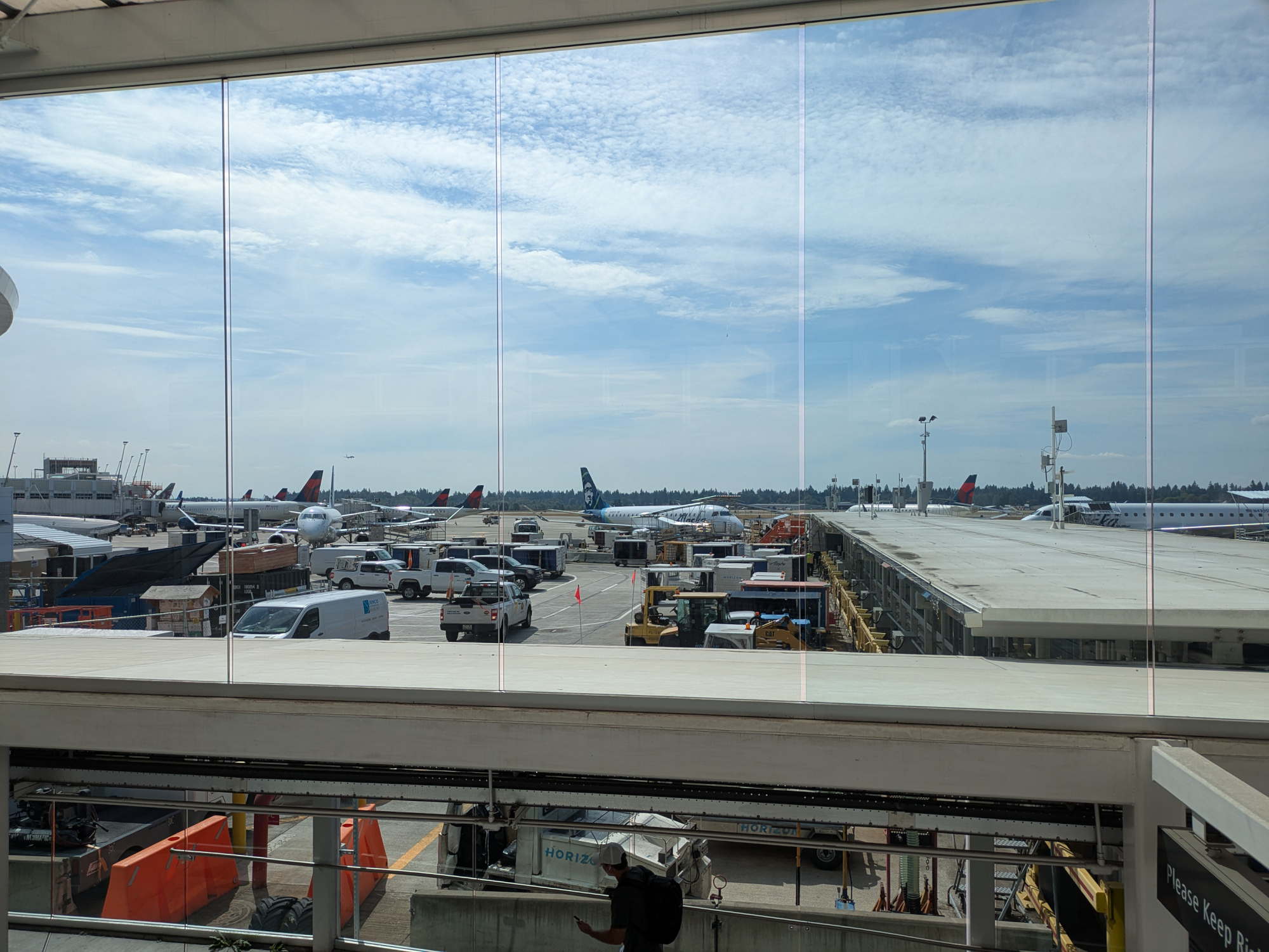
-
Spokane International Airport's code GEG comes from its former name, Geiger Field, named after Major Harold Geiger. The code was retained when the site transitioned from a WWII military base to a commercial airport.
Wikipedia – Spokane International Airport ↩
-
-
Photographing Fireworks at a Distance 🎆
Fireworks Photos with a Long Zoom Lens: A Better Approach
Photographing fireworks from a distance of several kilometers can be tricky if your tripod setup is not absolutely stable, especially when using long exposures. I used a Nikon Z30 with the 50–250mm lens on a tripod, aiming to capture sharp bursts with surrounding buildings in the frame:

📸 Fireworks Photography: The Classic Recipe
Here is the standard setup for capturing fireworks:
- ISO: 100 (or as low as your camera allows)
- Aperture: f/8 to f/11 for sharpness and depth
- Shutter Speed: 2 to 10 seconds (use BULB mode and adjust based on burst duration)
- Focus: Manual, set to infinity or pre-focus on a distant object
- White Balance: Daylight or Auto
- Stabilization: Use a tripod and disable VR
- Remote Trigger: Optional, but helps avoid camera shake
This setup works great when you're close to the action and using a standard or wide-angle lens. But what if the fireworks are several kilometers away, you're shooting with a long zoom, and your tripod setup isn't exactly rock-solid? That's where things get interesting.
The Problem
While the fireworks were crisp, the buildings appeared blurry. The cause is vibrations from people walking nearby and the long shutter time (several seconds). Even if you take pictures without a tripod and have VR enabled, the system could not stabilize the image over such long exposures.
And tripods, especially on unstable surfaces, don't eliminate this issue. Using shorter shutter speeds helps reduce motion blur, but it introduces a new challenge: you often miss the perfect moment. Sometimes, all it takes is a fraction of a second to turn a potential masterpiece into a chaotic blur of light.13,0s f/8 ISO 100/21° f=200mm/300mm
The Solution: Slow-Shutter Video
Switching to video mode at 1/25s shutter speed solved the problem:
- Sliding through the video to capture the perfect frame as a new level of content creation
- No motion blur in buildings or other static elements
- Fireworks still looked vibrant and dynamic
- Overall stabilization was noticeably better
You lose the long light trails typical of multi-second exposures, but the bursts remain visually striking.
Instead of hoping to hit the perfect moment with a single shot, just extract stills from the exact frame you want. For example, using VLC (Shift+S or Menu → Video → Take Snapshot) makes it easy to grab high-quality frames directly from your footage.Video resolution these days is 3840×2160. Not far off from stills at 5568×3712 with my camera. That's more than enough to crop, zoom, and relive every spark in crisp detail: gone are the days of grainy VGA 640×480 clips from early digital cameras. The kind that looked halfway decent on a VHS-era TV. This isn't VHS anymore. This is IMAX, and you are in the front row.
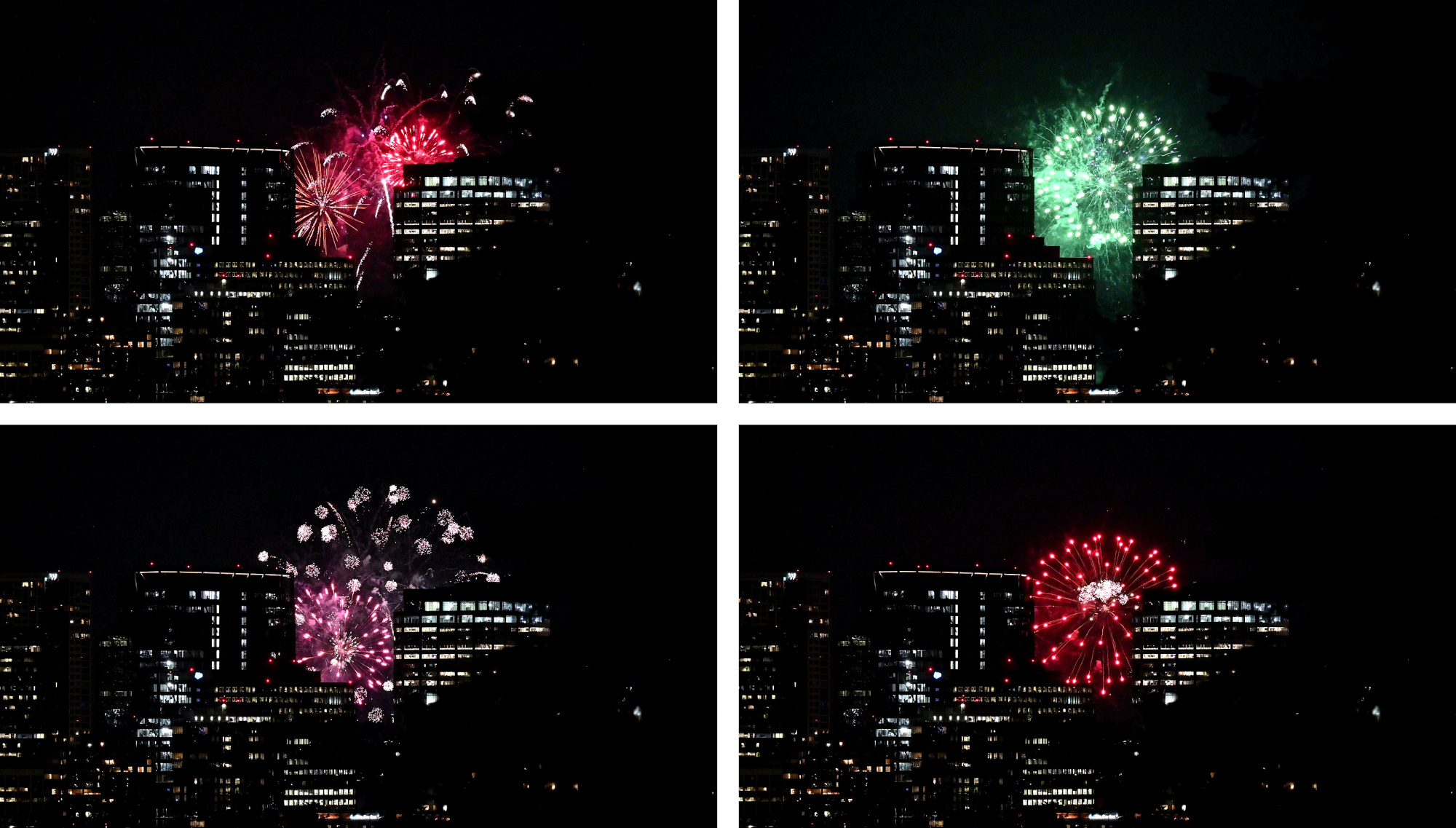
-
AstrHori 6.5mm f/2.0 Fisheye Lens
The AstrHori 6.5mm f/2 Fisheye Lens is a manual focus Circular Fisheye Lens for APS-C cameras with a 192° field of view.
Best general setting is at the 1m mark and f/5.6. This puts everything from near to infinity in focus.
The AstrHori 6.5mm Fisheye Lens fills the entire APS-C sensor with its 192° field of view, unlike the Laowa 4mm Circular Fisheye, which projects a 210° image circle that does not fully cover the frame.
AstrHori 6.5mm Laowa 4mm 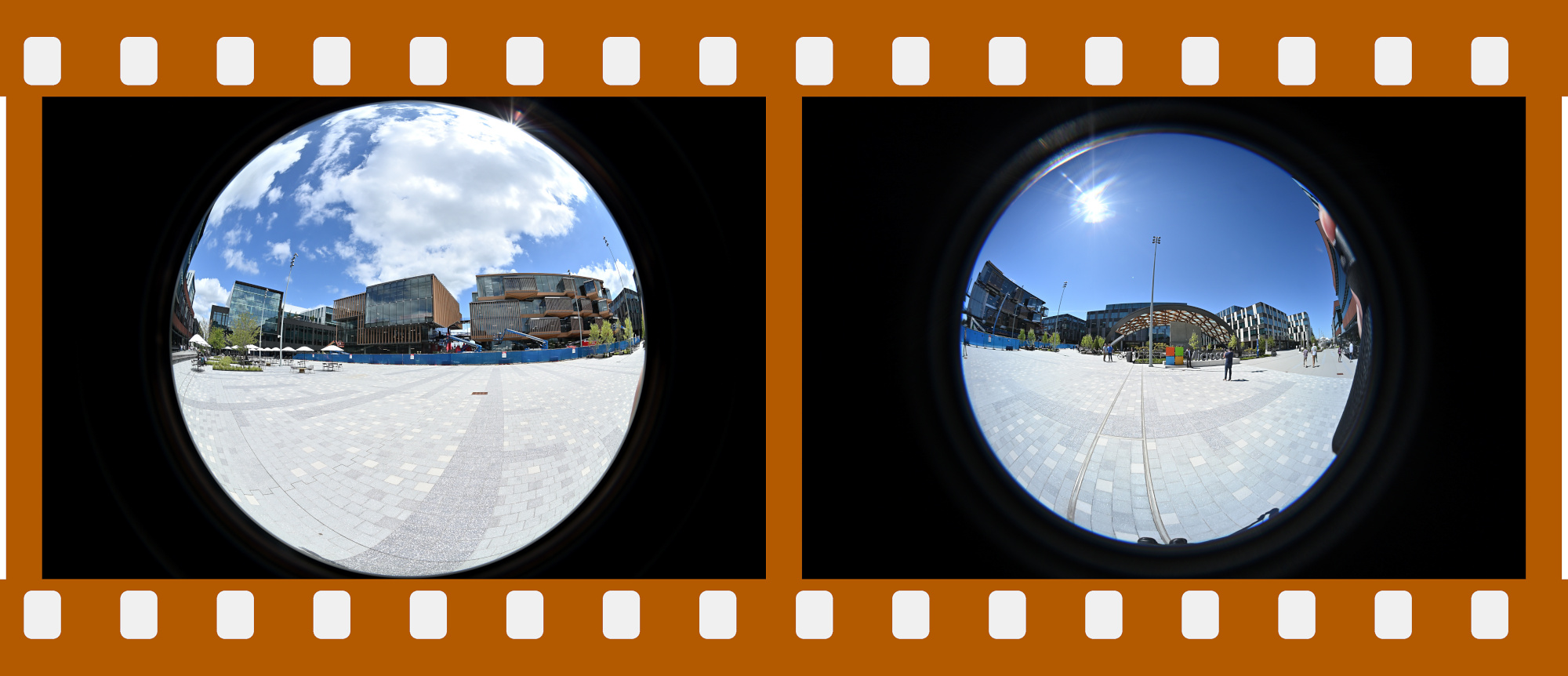
However, with only 192° of coverage, the AstrHori 6.5mm makes it difficult to capture a full 360°×180° panorama using just two images. In contrast, the Laowa 4mm performs much better in this regard thanks to its wider 210° field of view.
Example 360°×180° panorama with two pictures using the AstrHori 6.5mm Fisheye Lens:
1/800s f/5,6 ISO 100/21° f=6,5mm
Both images must be perfectly aligned using a nodal point adapter. If the camera is even slightly off-axis, parallax errors can occur, which may lead to visible stitching artifacts like this because of the missing overlap:

A 360°×180° panorama created from only two images relies solely on control points along the left and right edges. Unlike multi-image panoramas using 6+Z+N shots2, there is no flexibility for adjustment in other areas of the frame.
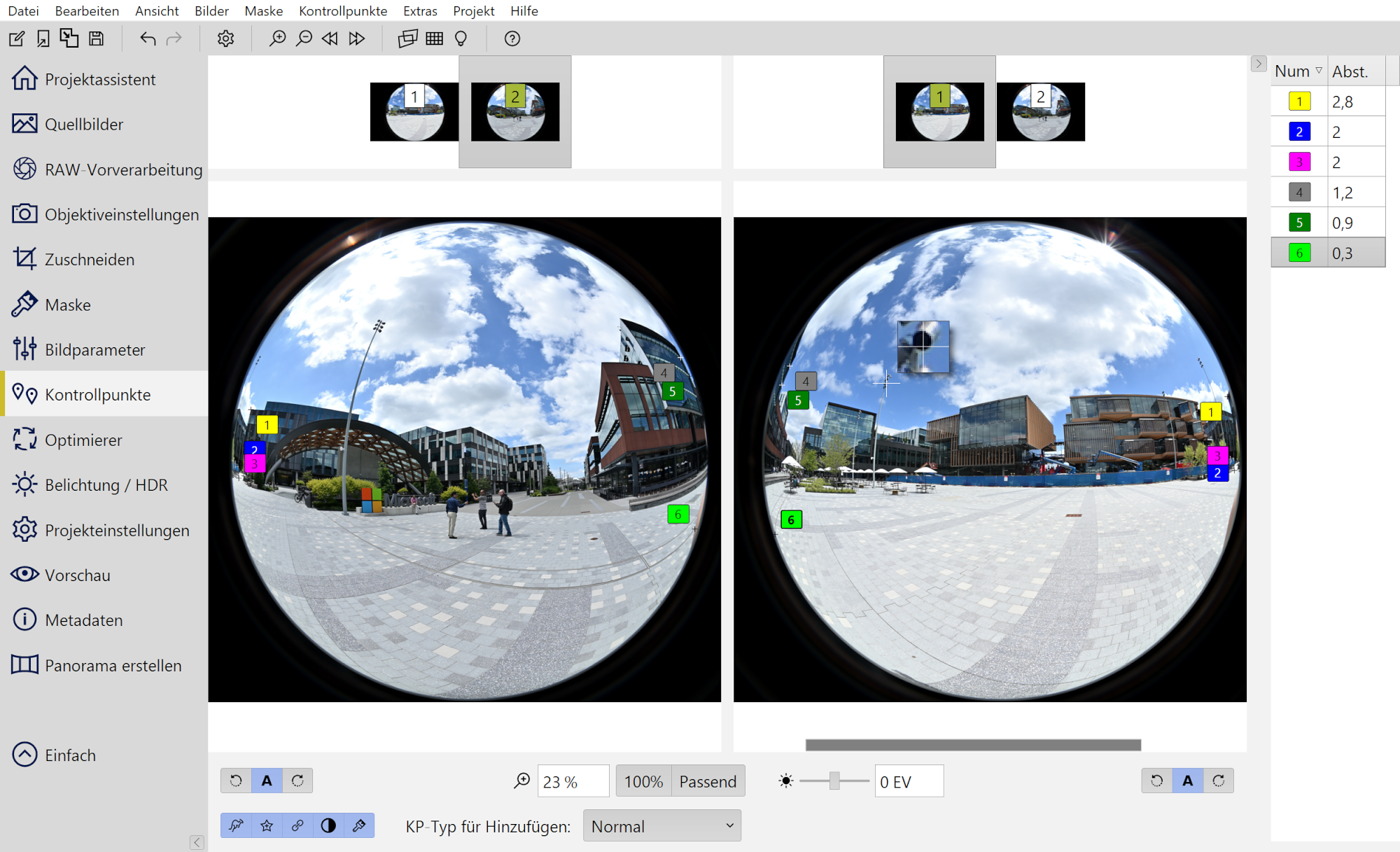
Interactive Panorama AstrHori 6.5mm Test 1

To improve the quality of a 360°×180° panorama, three images should be taken at 120° intervals with the camera slightly tilted upward, along with an additional Nadir (bottom) shot to cover the ground area and eliminate potential shadows.
1/1000s f/5,6 ISO 100/21° f=6,5mm
The three slightly upward-tilted shots capture the sky seamlessly, while the Nadir takes care of the floor details:
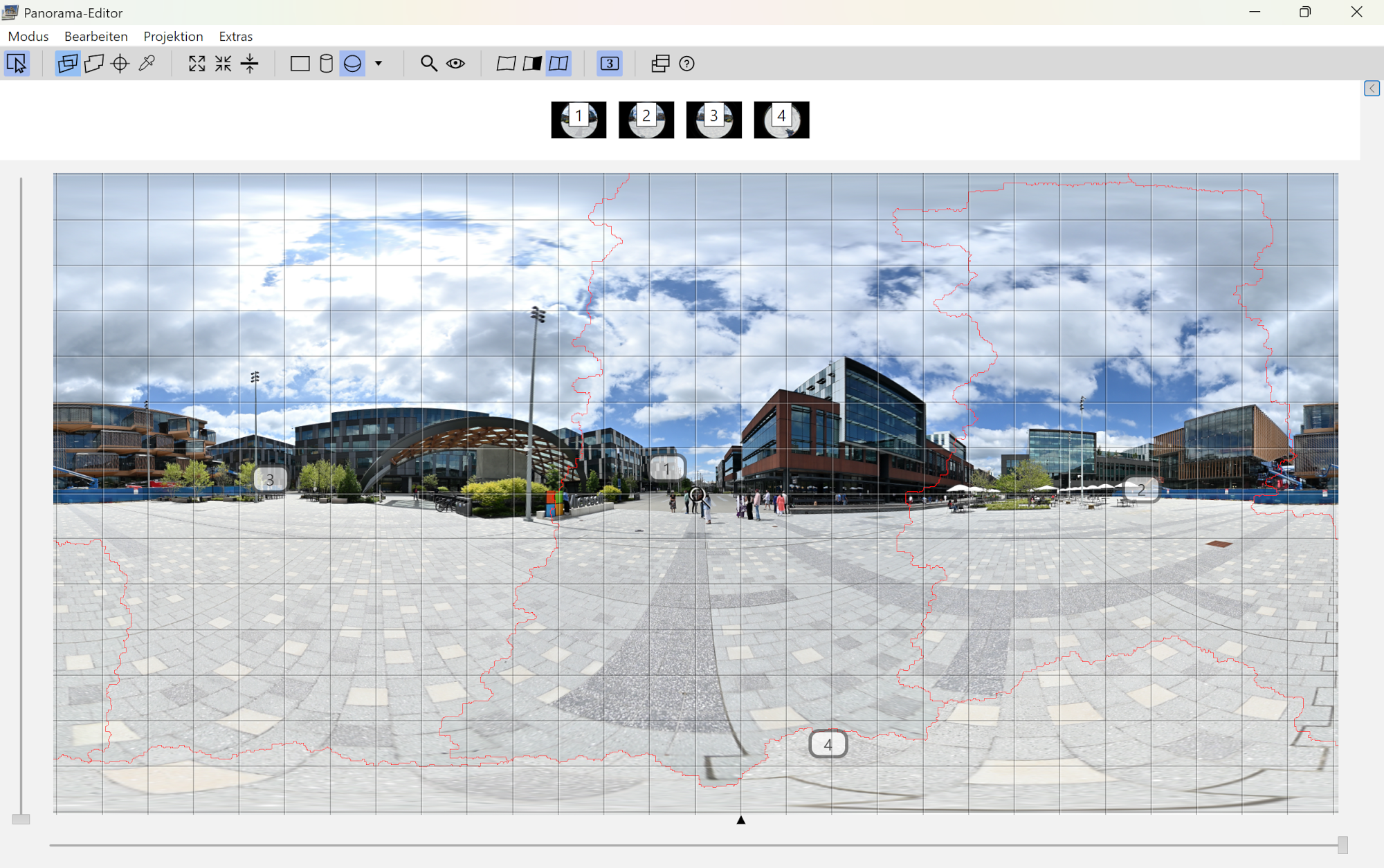
But this only yields a final resolution of 8k by 4k. A two-shot fisheye panorama using the 4mm lens is 7k by 3.5k, which is already quite limited. In contrast, a full-frame fisheye panorama captured using 6+Z+N gets 16k by 8k.
All resolutions are based on a 20MP camera.Interactive Panorama AstrHori 6.5mm Test 2

Surprisingly sharp in the corners for such an affordable lens. A clear improvement compared to the old Zenitar, which was my first fisheye lens and handled sharpness like it was optional and felt more like a Cold War relic than an optical instrument.
Not sure how the Peleng even compares, but for a circular fisheye on full-frame cameras at that time, it seems better suited for museum display than modern photography.1/800s f/5,6 ISO 100/21° f=6,5mm
And nice sunstars:
1/800s f/5,6 ISO 100/21° f=6,5mm
Only a Circular Fisheye can capture this:
1/400s f/5,6 ISO 100/21° f=6,5mm
With the focus set to its minimum distance, the leaf is actually touching the front element of the lens. This is one of the drawbacks of this lens: you cannot make those funny fisheye closeup shots. The Laowa 4mm is much better in this regard with its extreme close focus capability.
1/800s f/5,6 ISO 100/21° f=6,5mm
More examples shot with the AstrHori 6.5mm lens on a Nikon Z30:
1/800s f/5,6 ISO 100/21° f=6,5mm
1/640s f/5,6 ISO 100/21° f=6,5mm
1/640s f/5,6 ISO 100/21° f=6,5mm
1/800s f/5,6 ISO 100/21° f=6,5mm
1/800s f/5,6 ISO 100/21° f=6,5mm
1/800s f/5,6 ISO 100/21° f=6,5mm
1/1000s f/5,6 ISO 100/21° f=6,5mm
1/1000s f/5,6 ISO 100/21° f=6,5mm
1/1000s f/5,6 ISO 100/21° f=6,5mm
1/1000s f/5,6 ISO 100/21° f=6,5mm
Summary
✅ AstrHori 6.5mm: Best for general fisheye photography, great sharpness, sunstars, and APS-C coverage.
✅ Laowa 4mm: Best for minimal-shot 360°×180° panoramas and creative close-up fisheye fun.
✅ TTArtisan 7.5mm: Best for general 360°×180° panoramas.
❌ AstrHori 6.5mm: Not ideal for close-ups or minimal-shot panoramas.
❌ Laowa 4mm: Weaker in flare resistance.
❌ TTArtisan 7.5mm: Beware the lens cap: it has a mind of its own and occasionally makes a break for freedom. Even with a fix in place. A true escape artist.See also
TTArtisan 7.5mm f/2.0 Fisheye Lens
Laowa 4mm f/2.8 Fisheye Lens
-
6+Z+N refers to a common panoramic shooting technique used with full-frame fisheye lenses: six horizontal shots taken in portrait orientation around a central point, plus one shot each for the Zenit (top) and the Nadir (bottom) views. ↩
-

